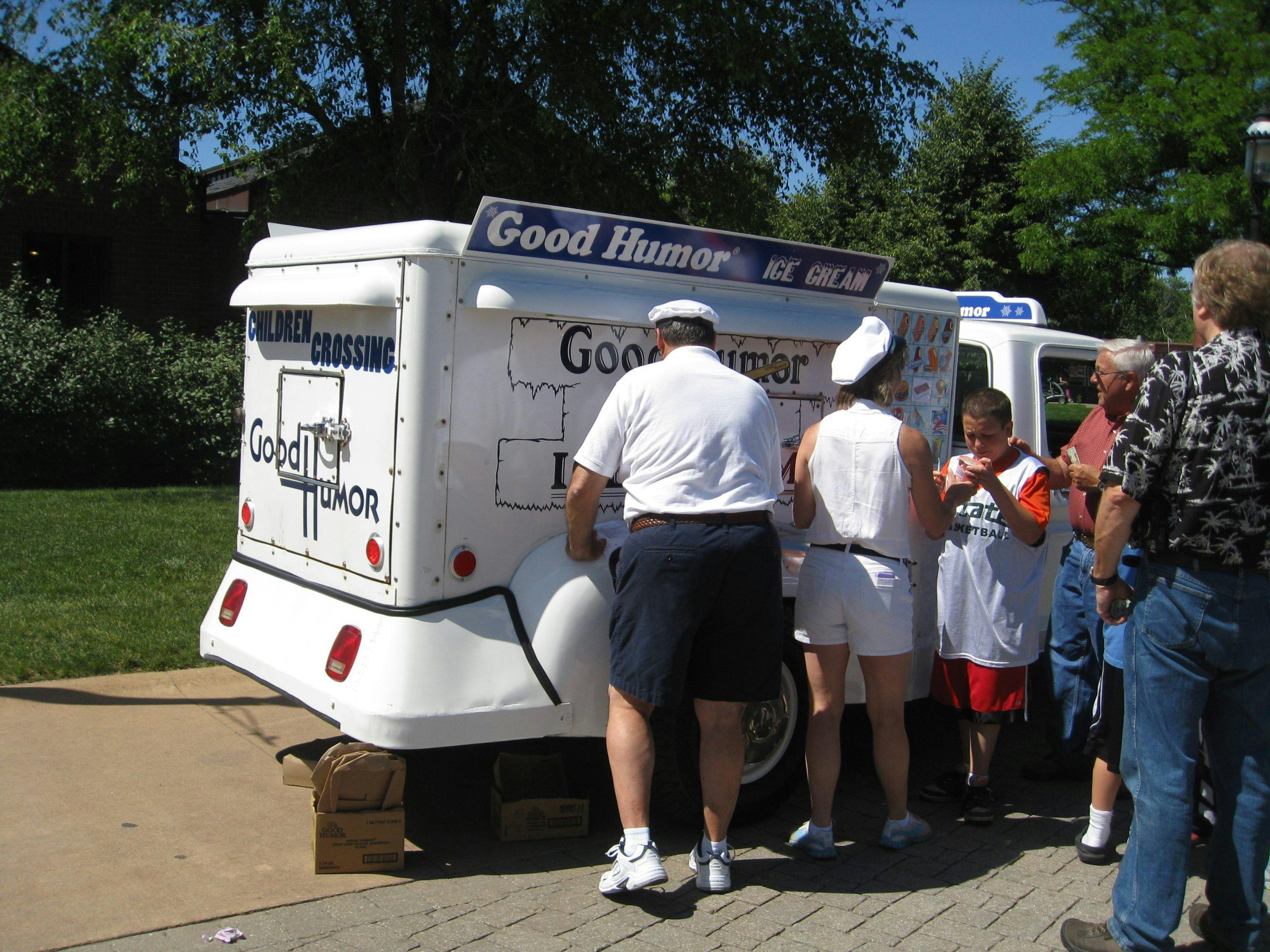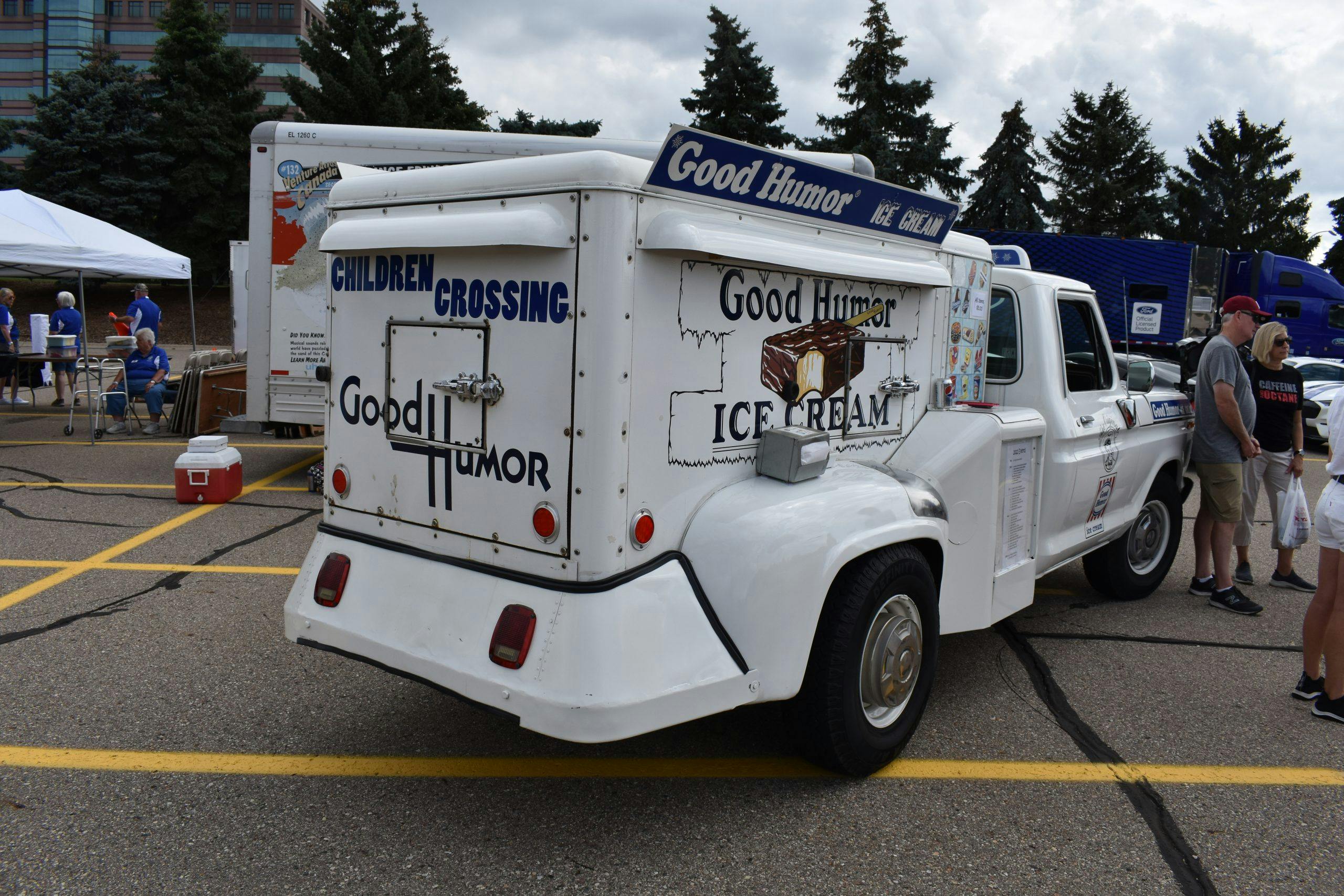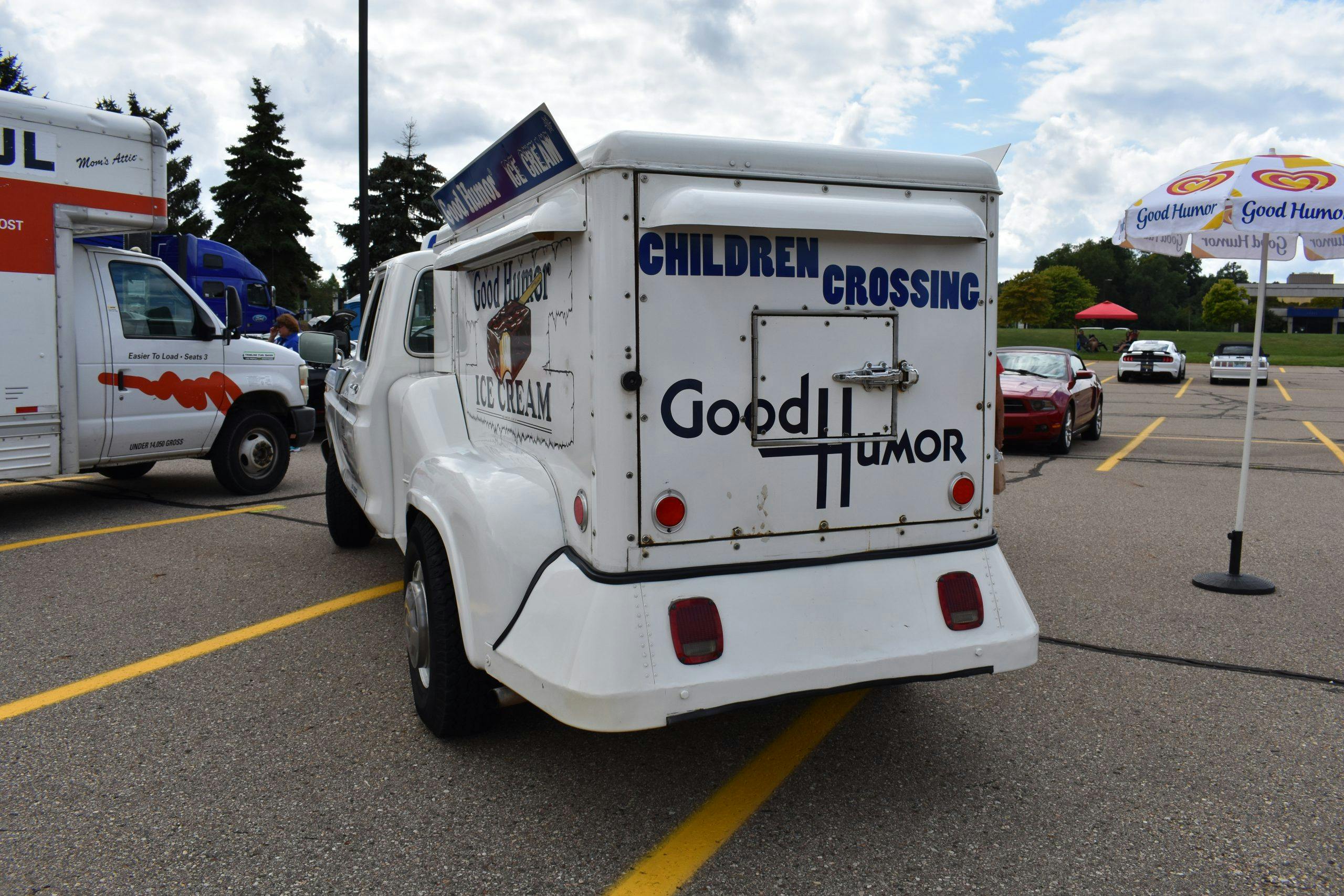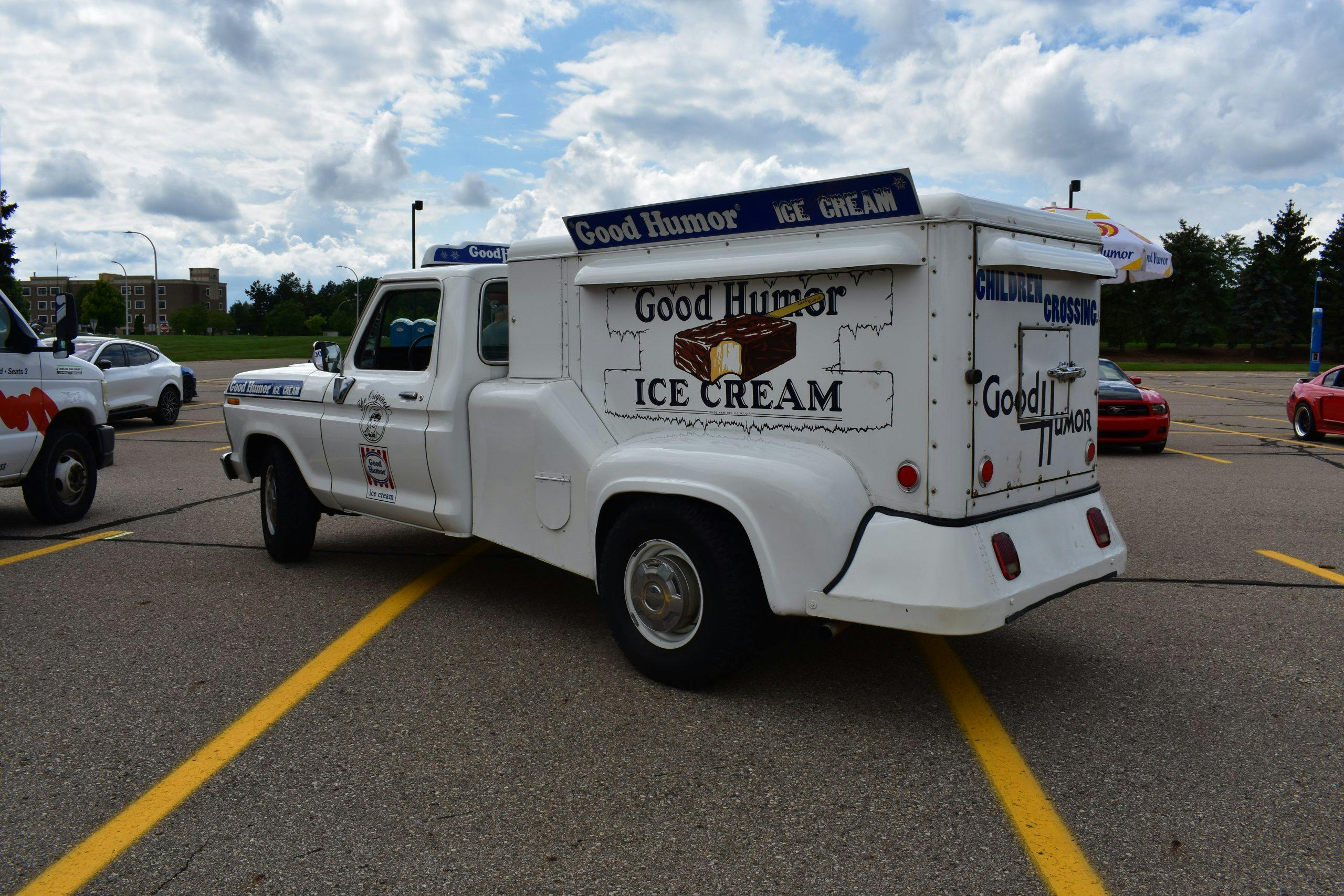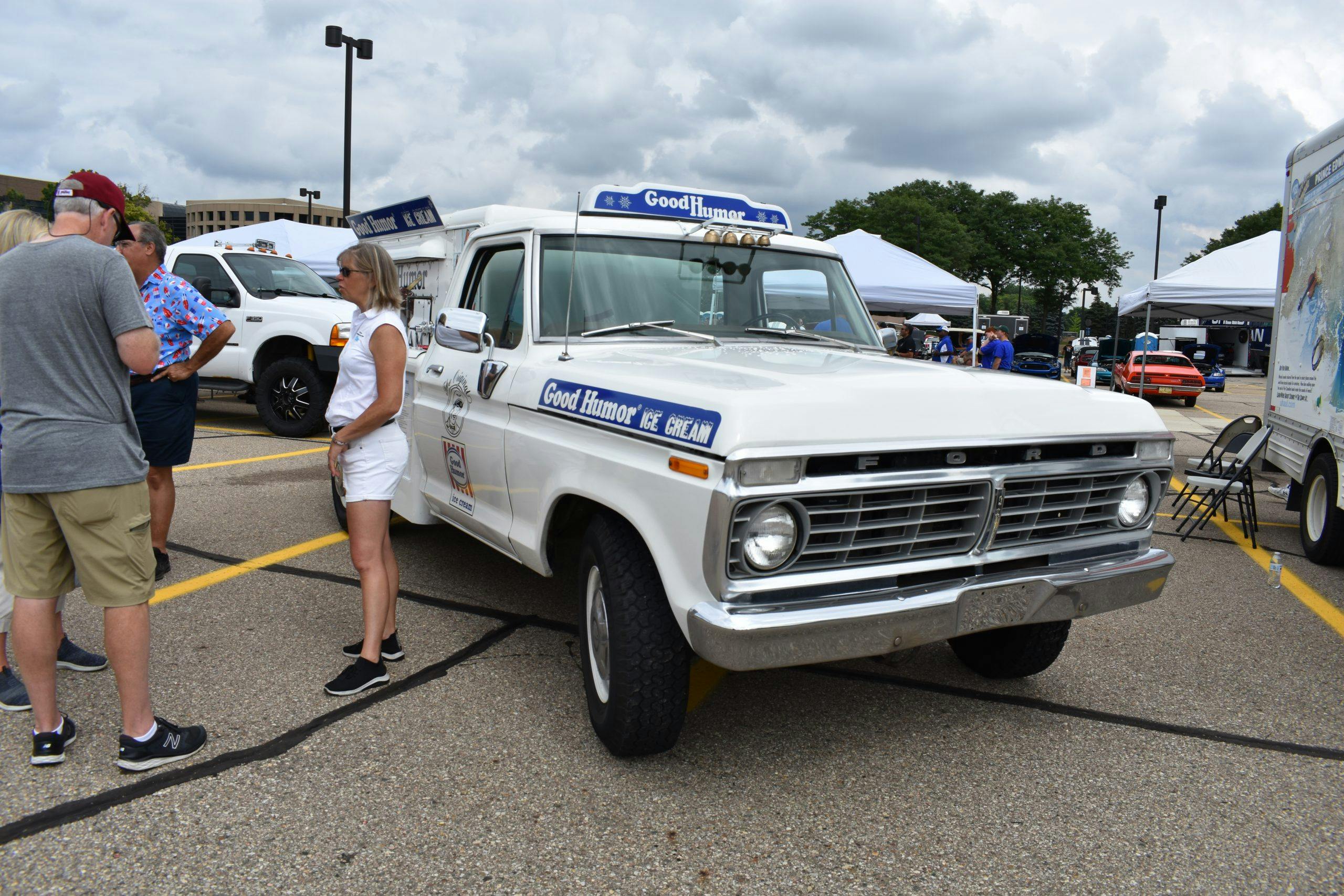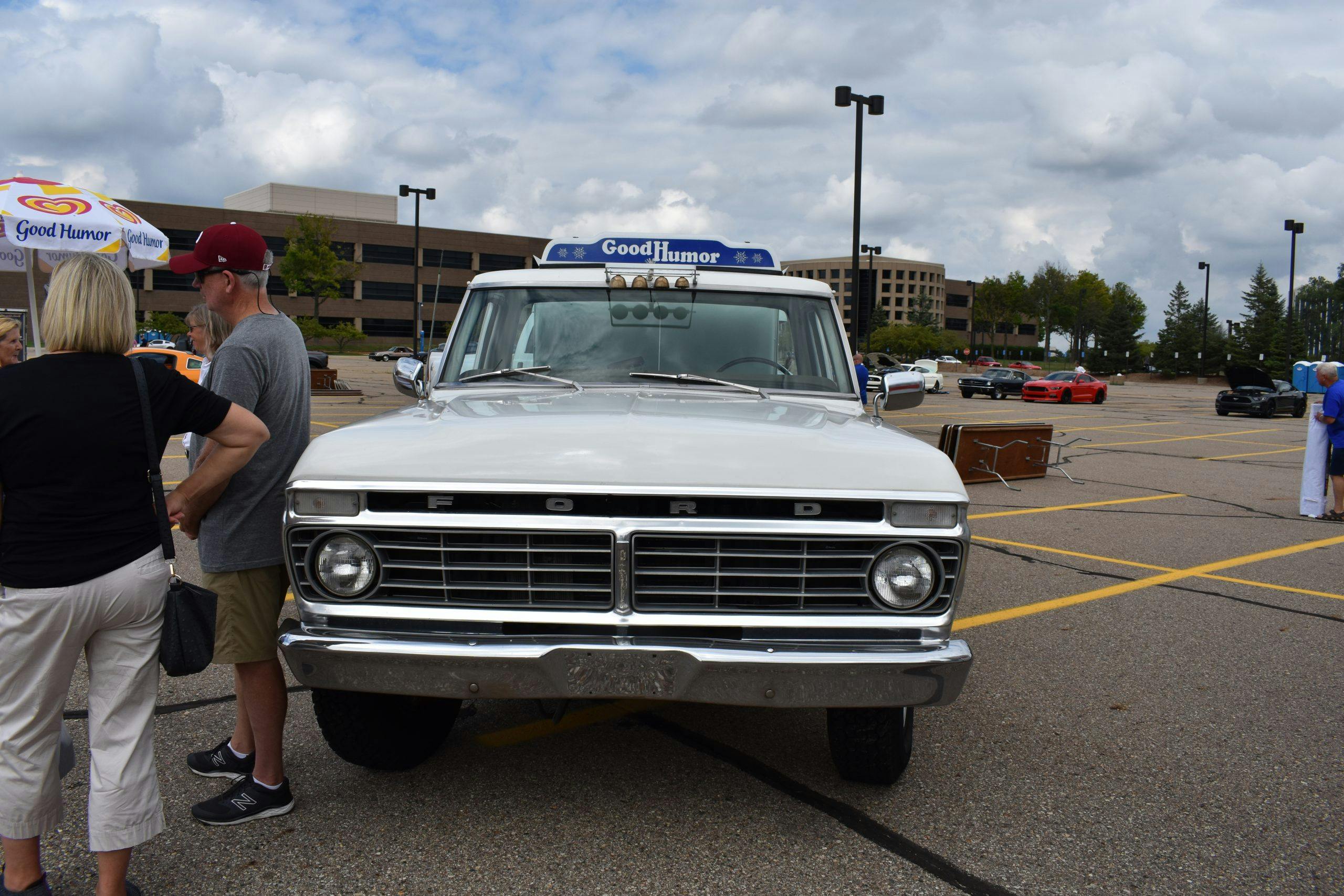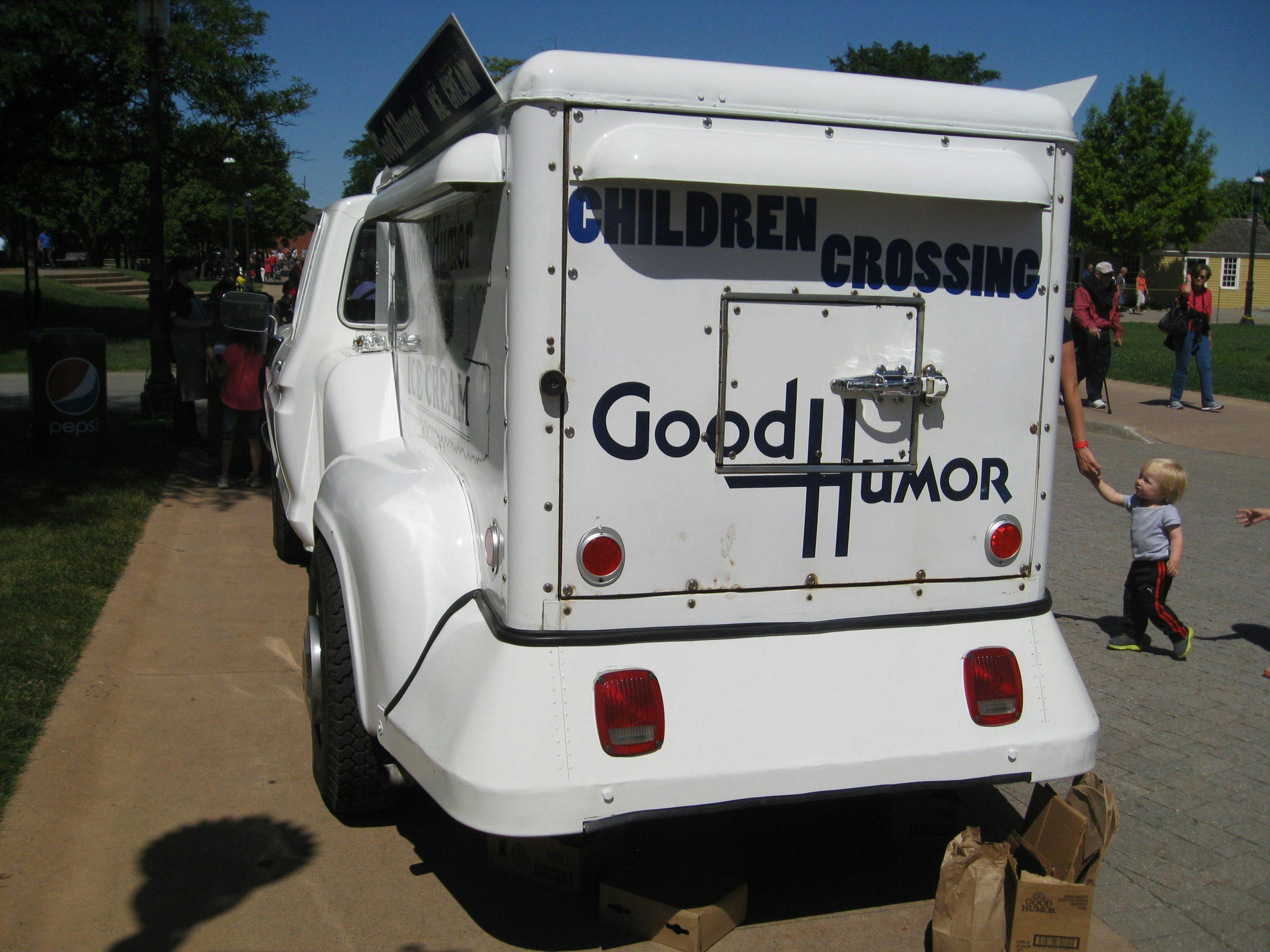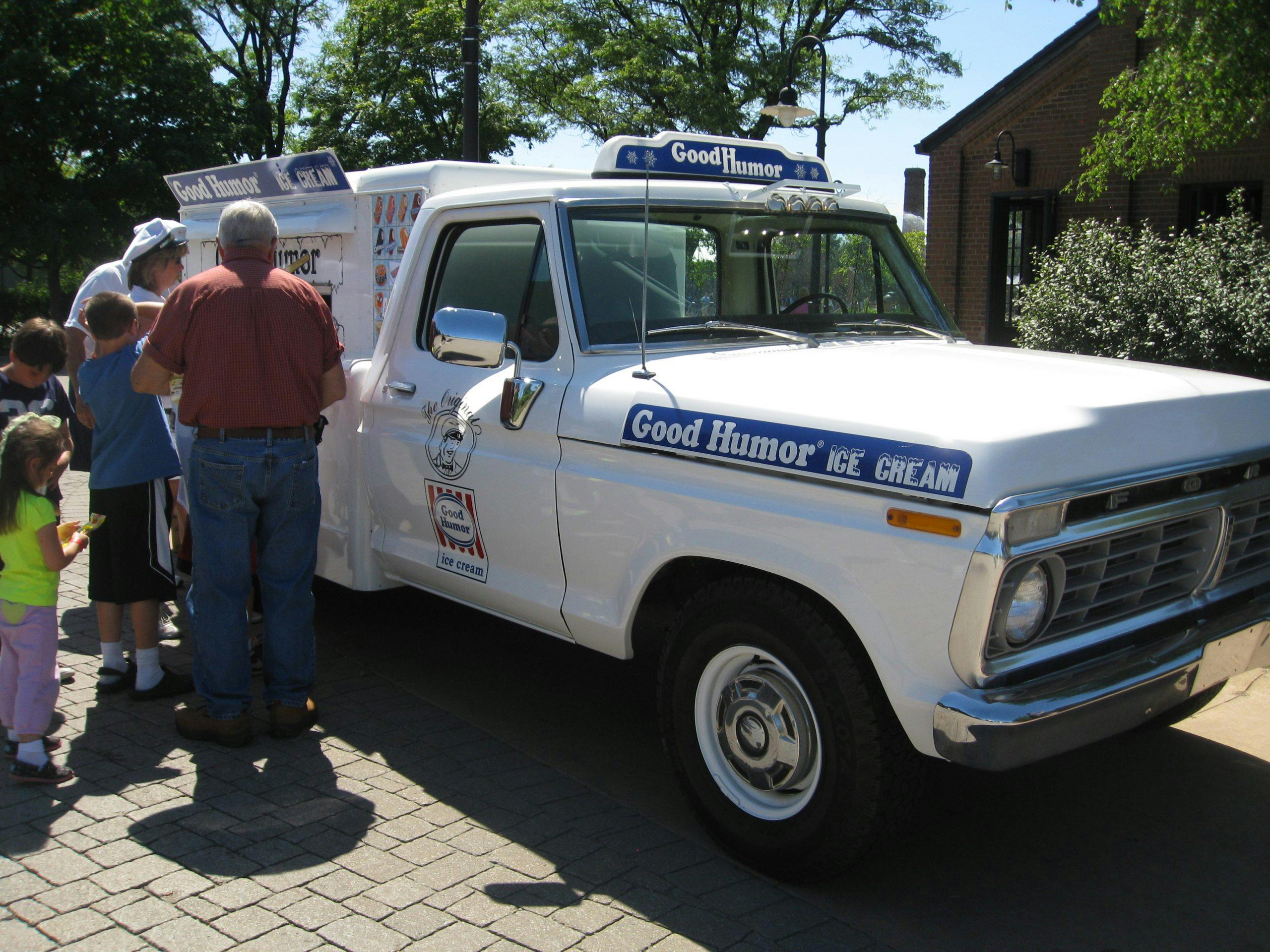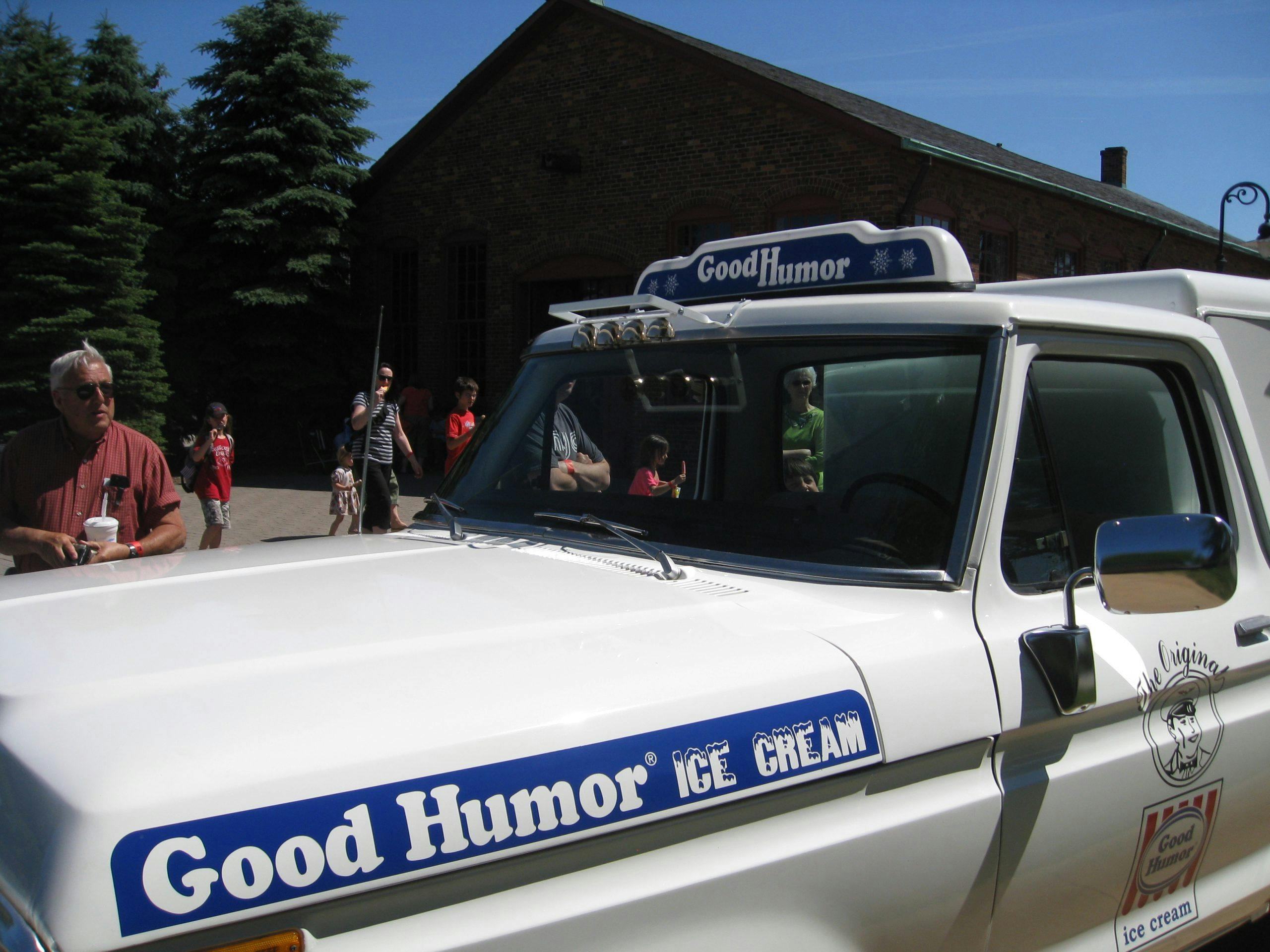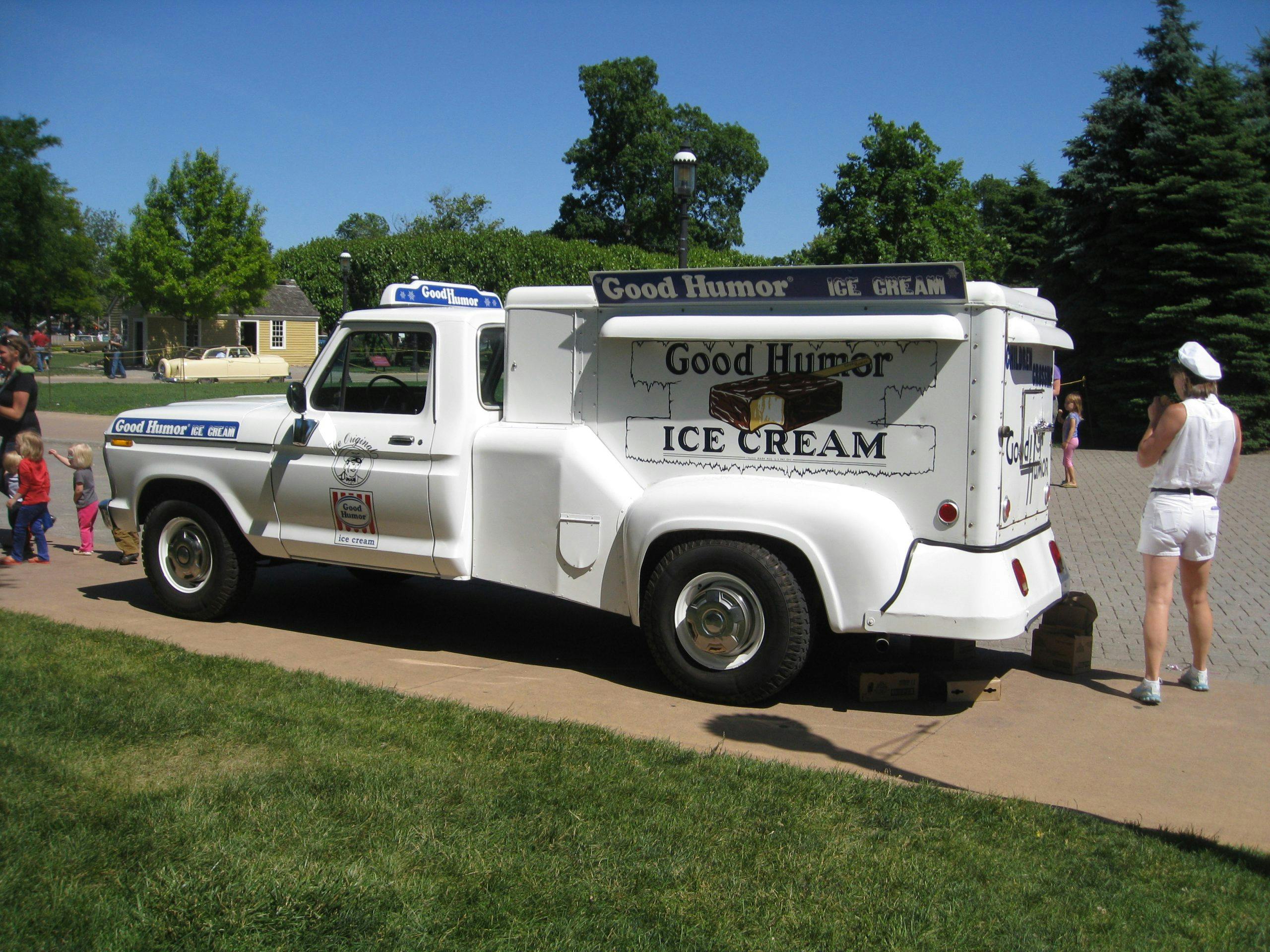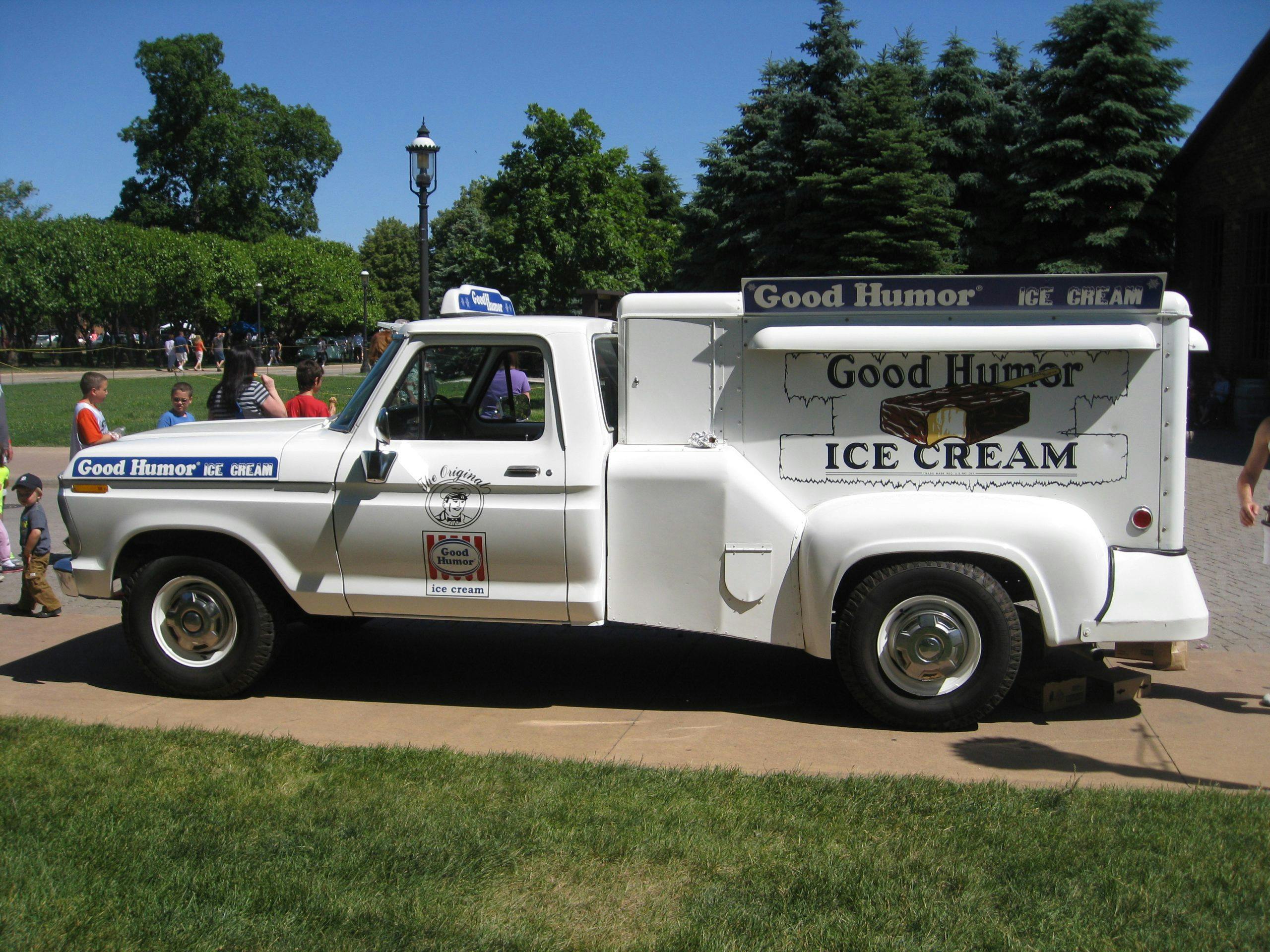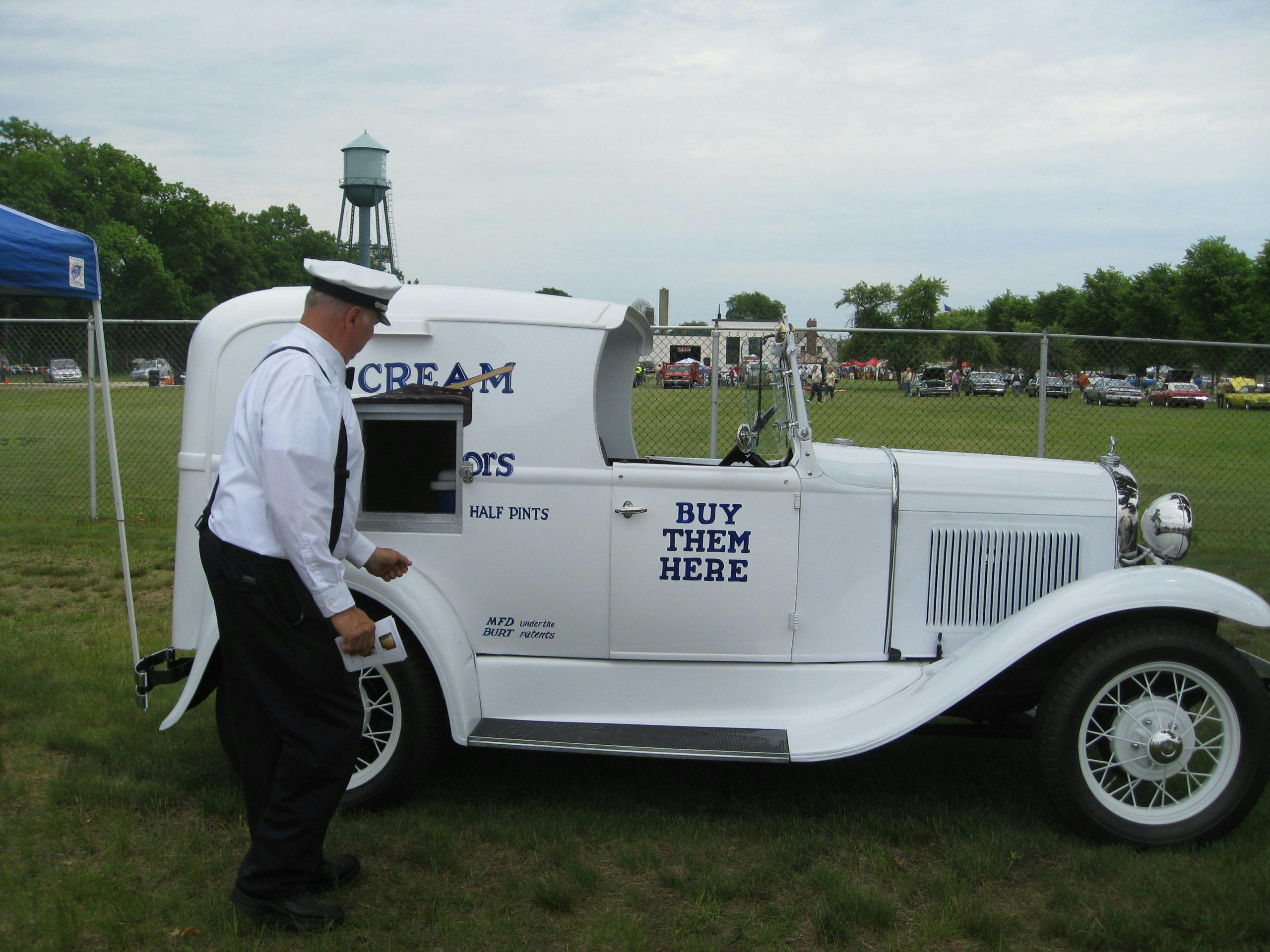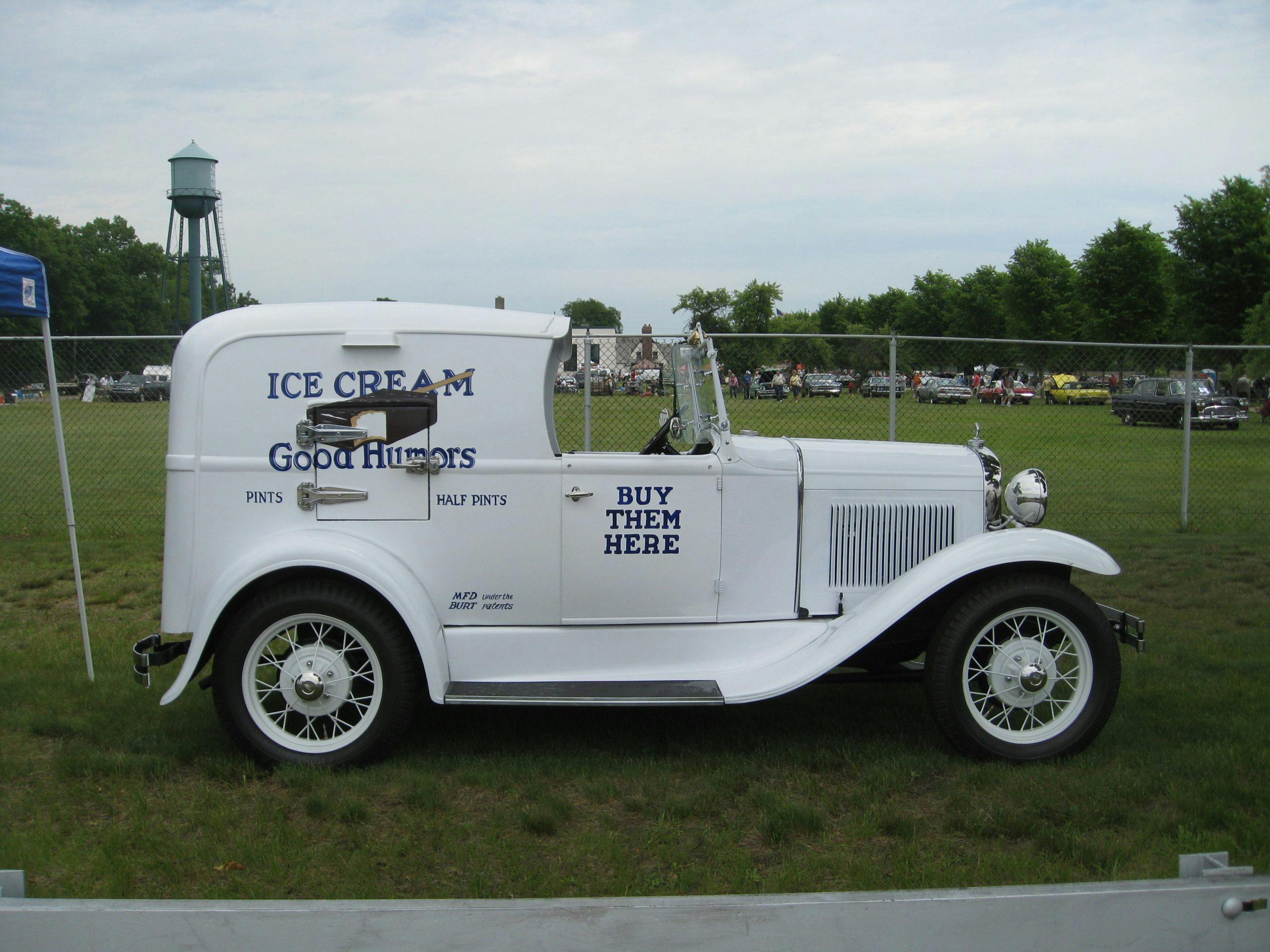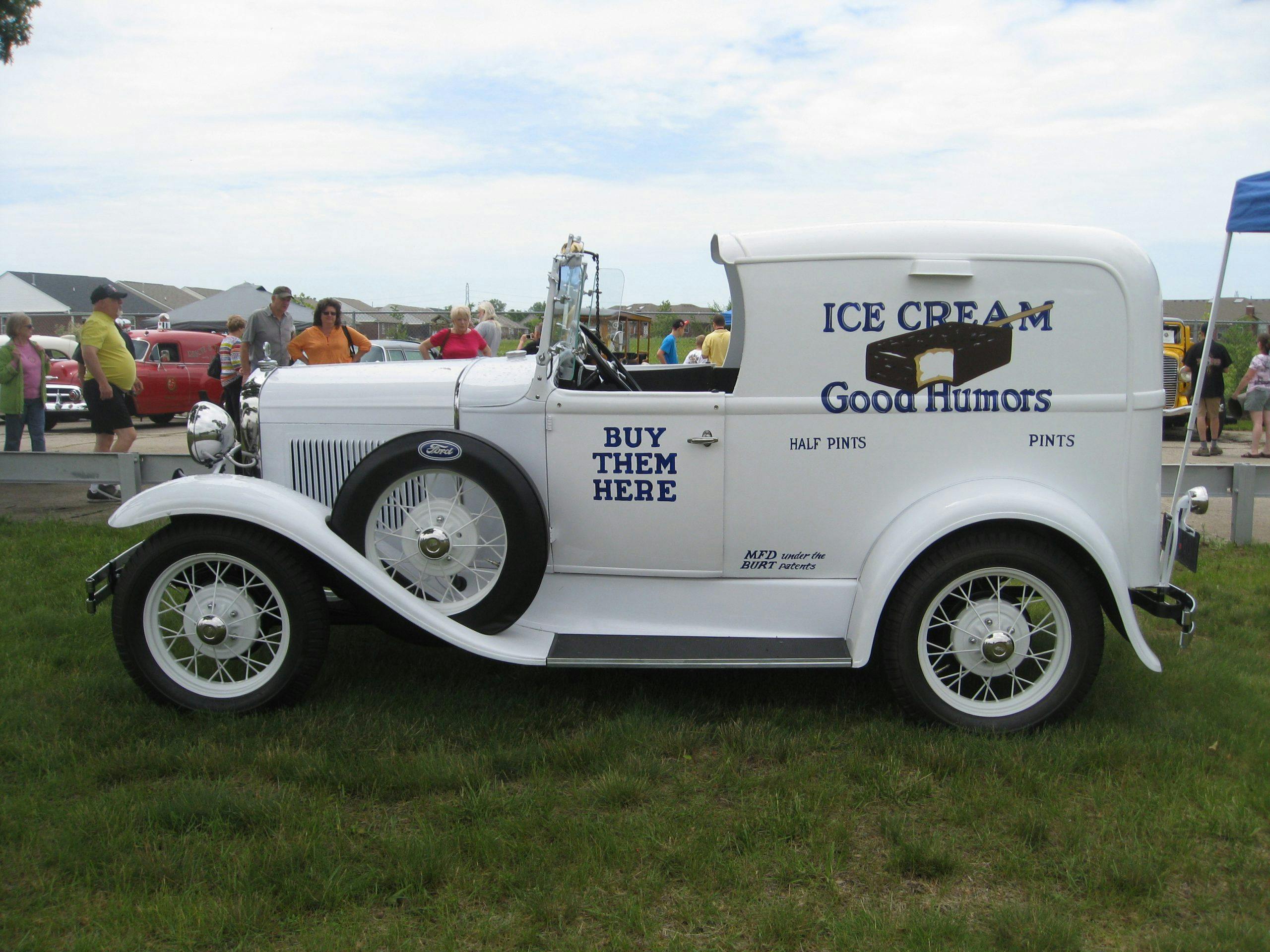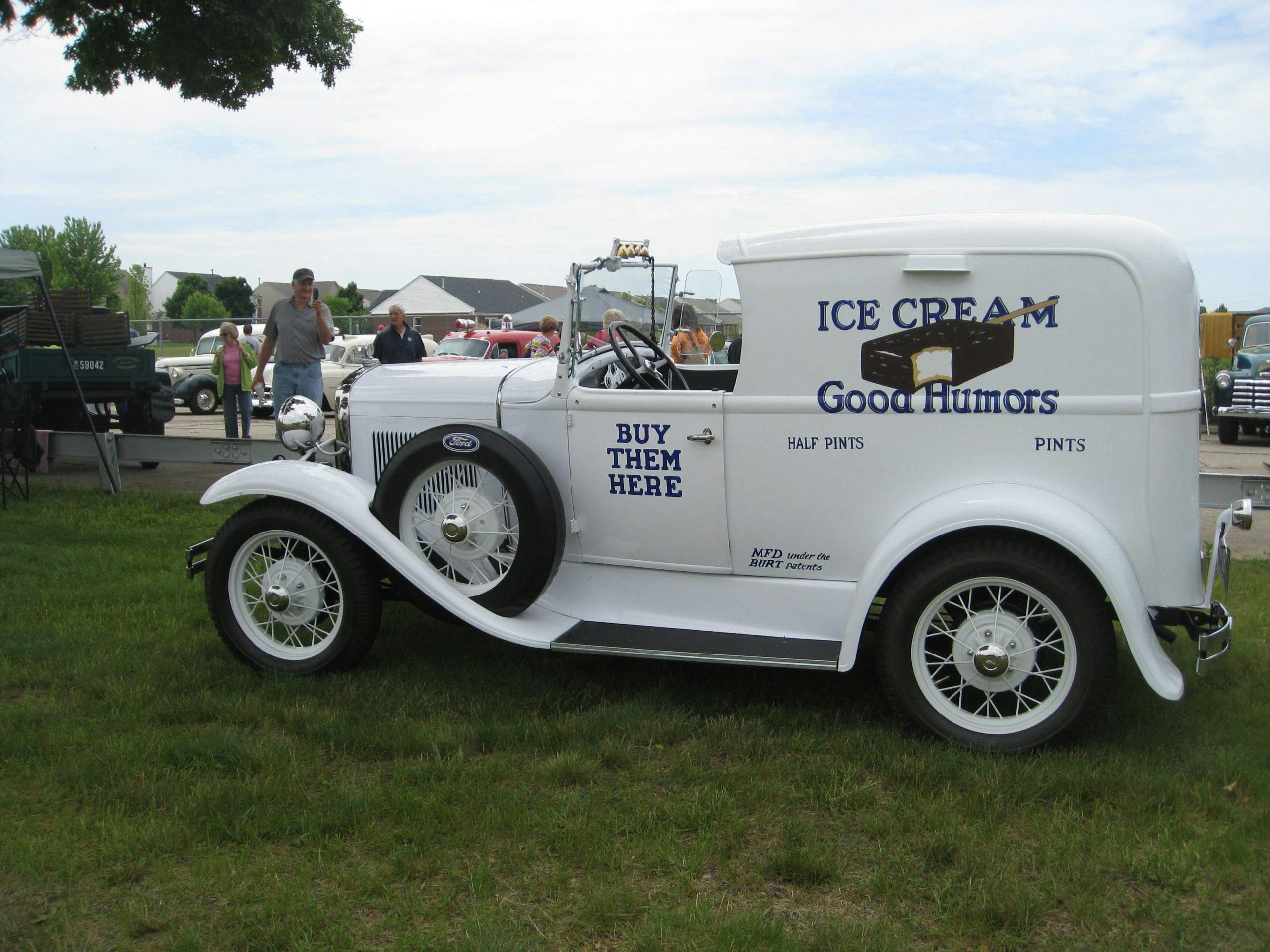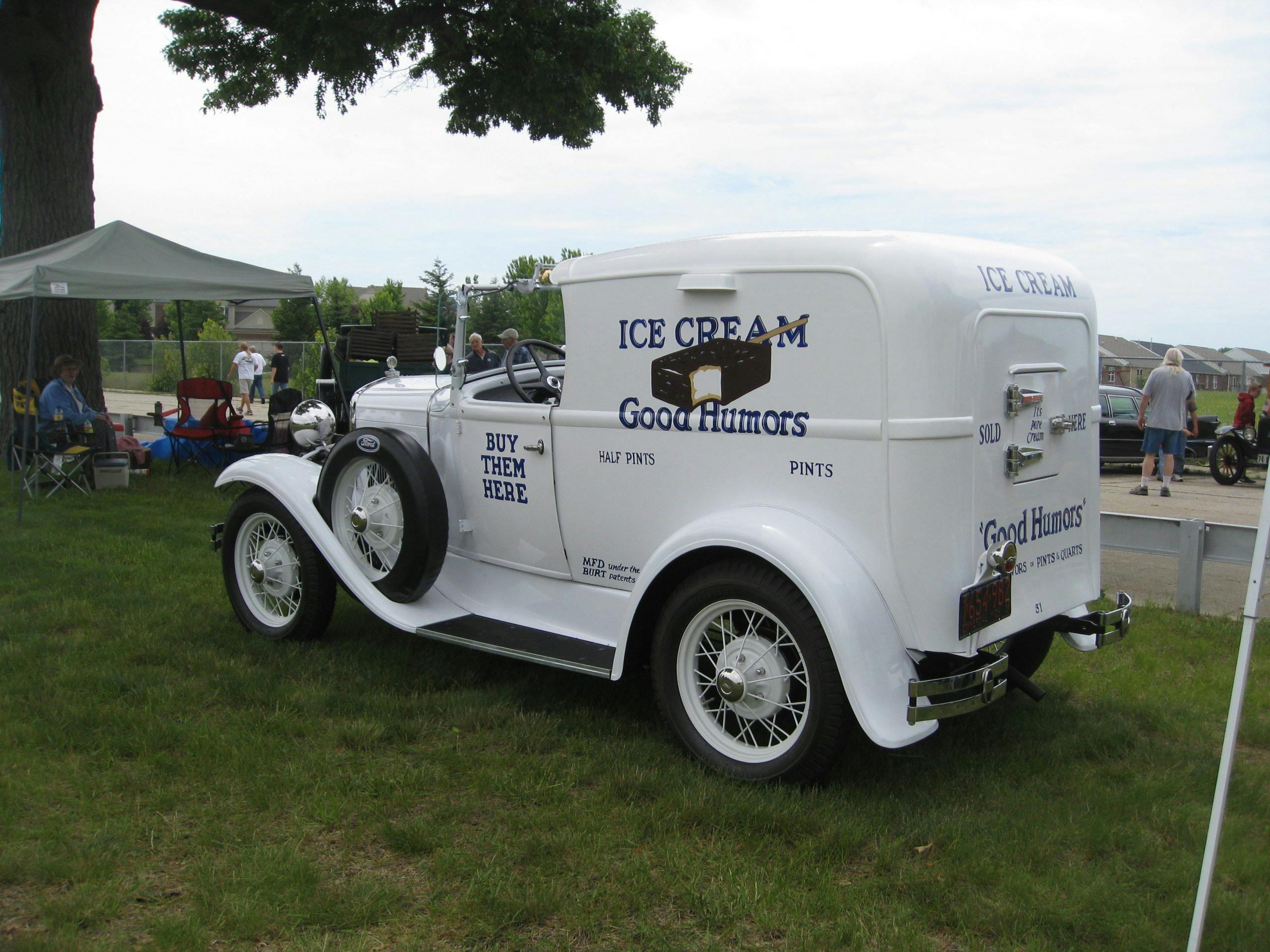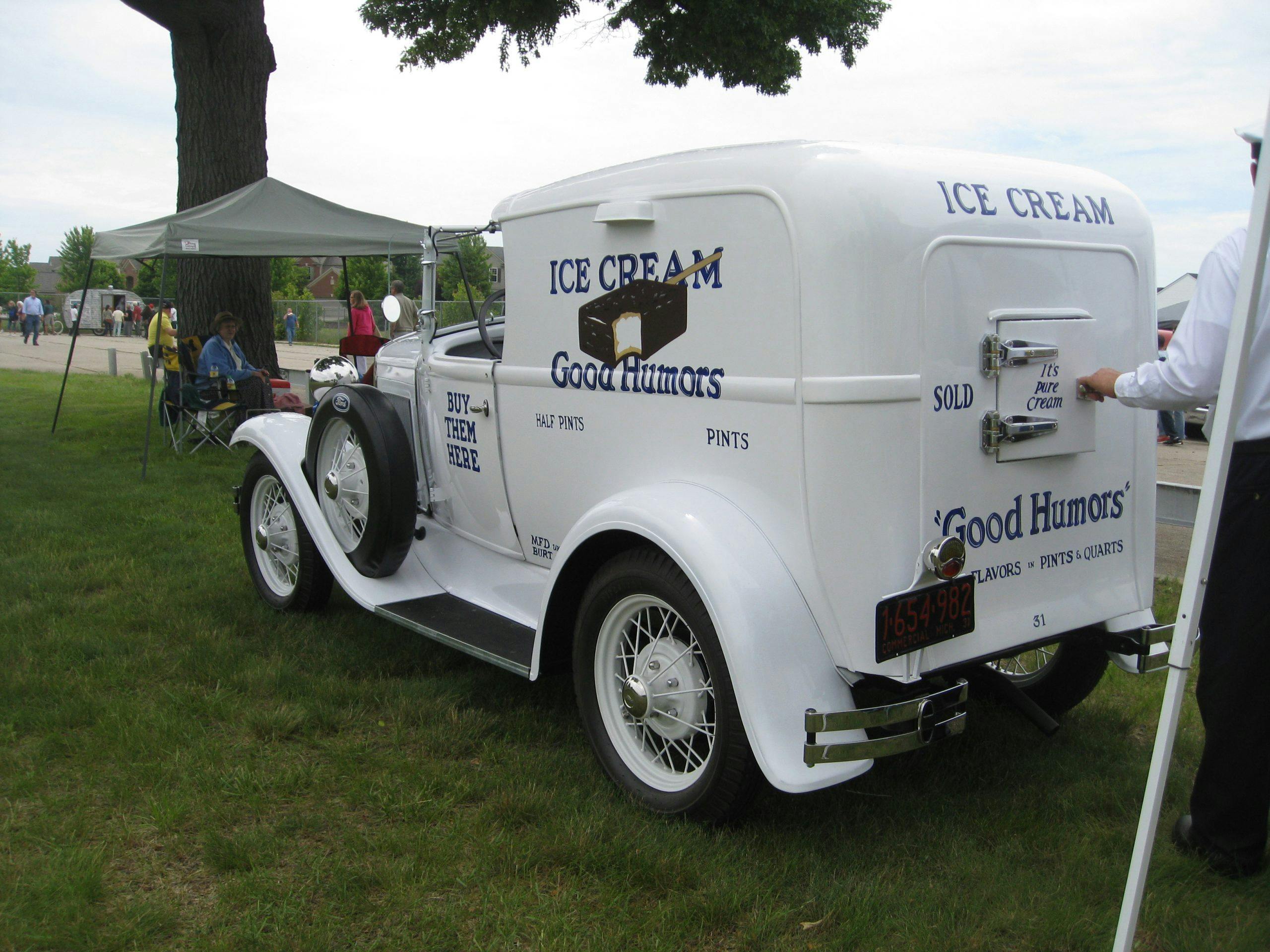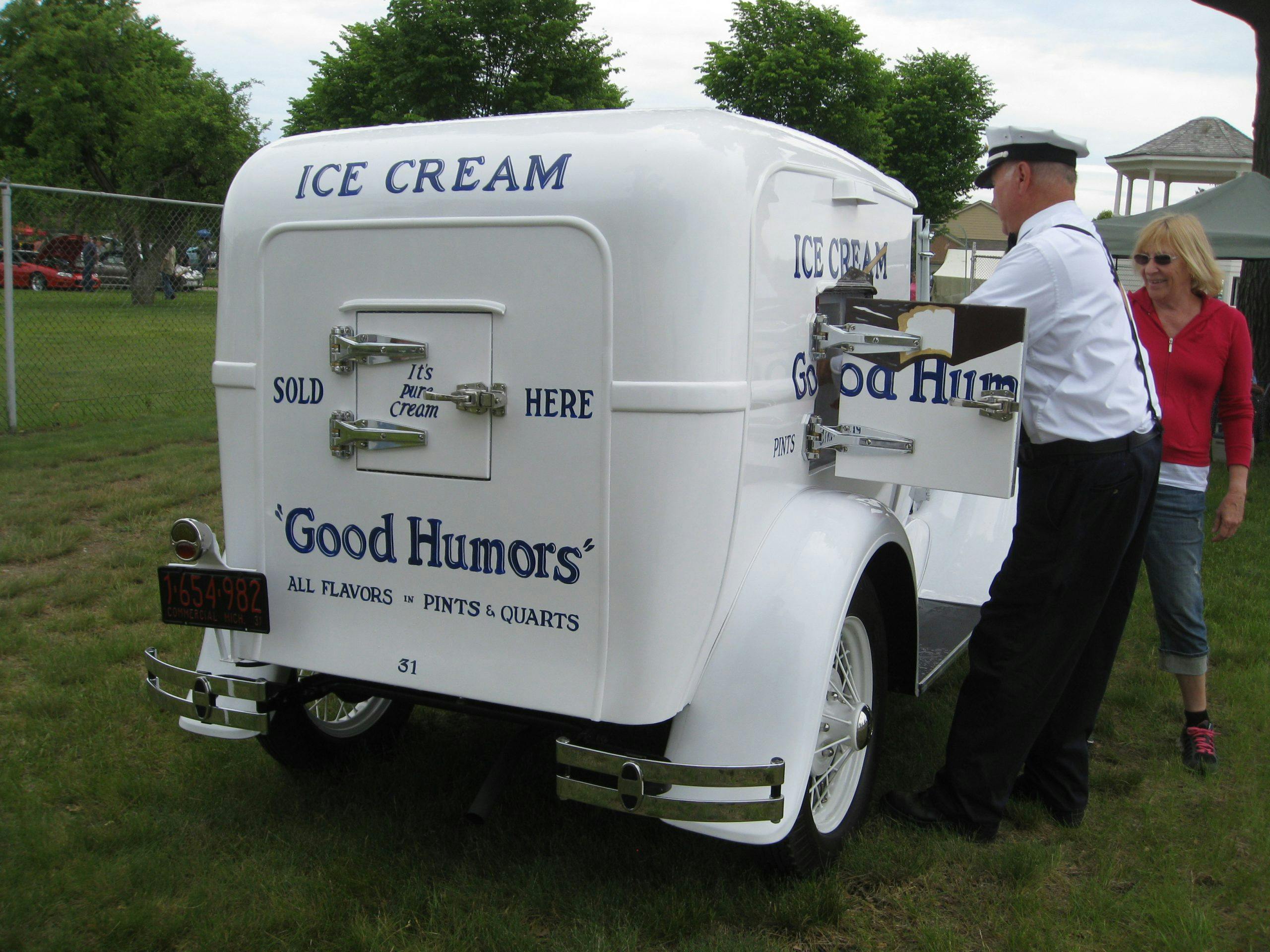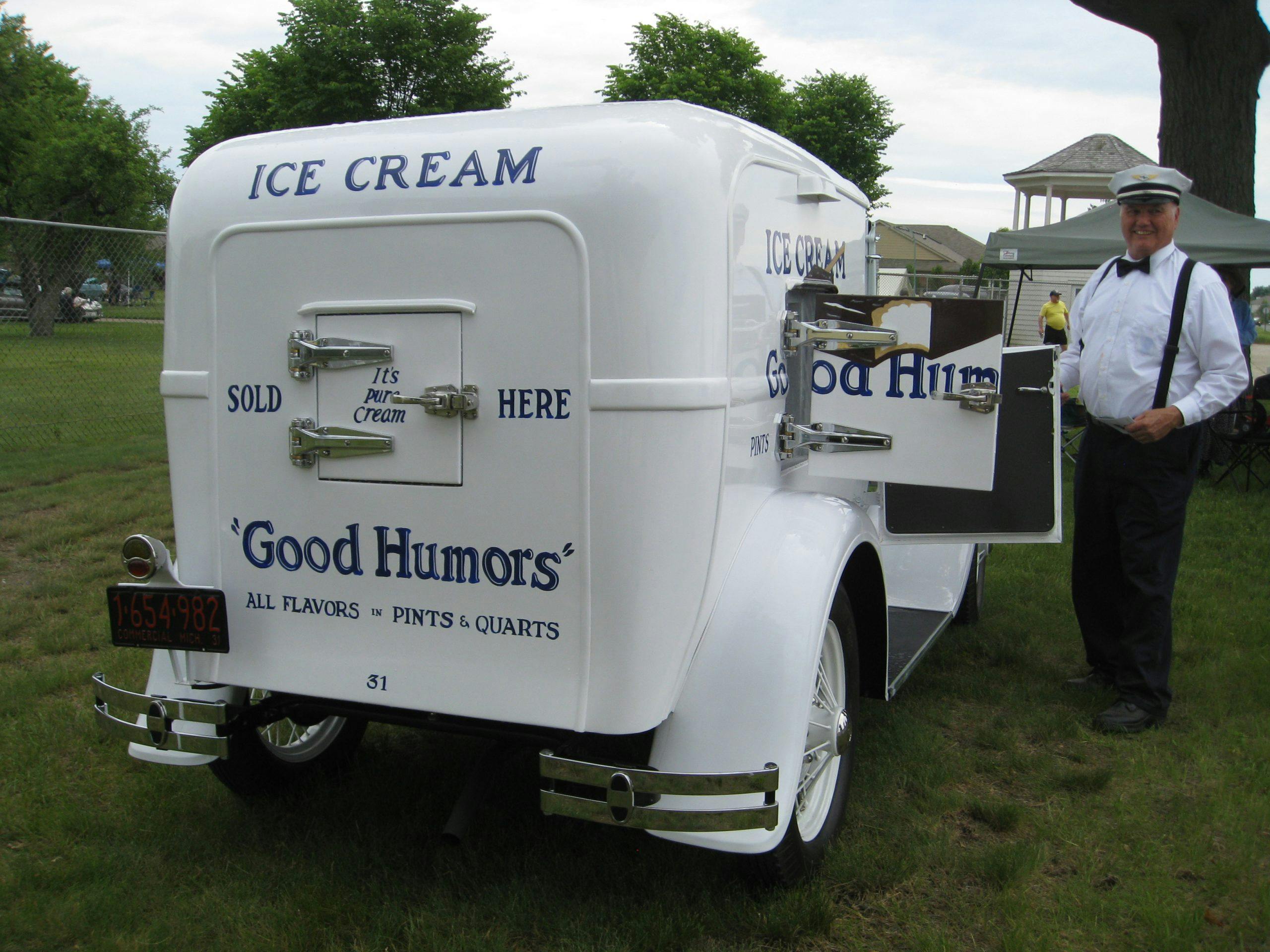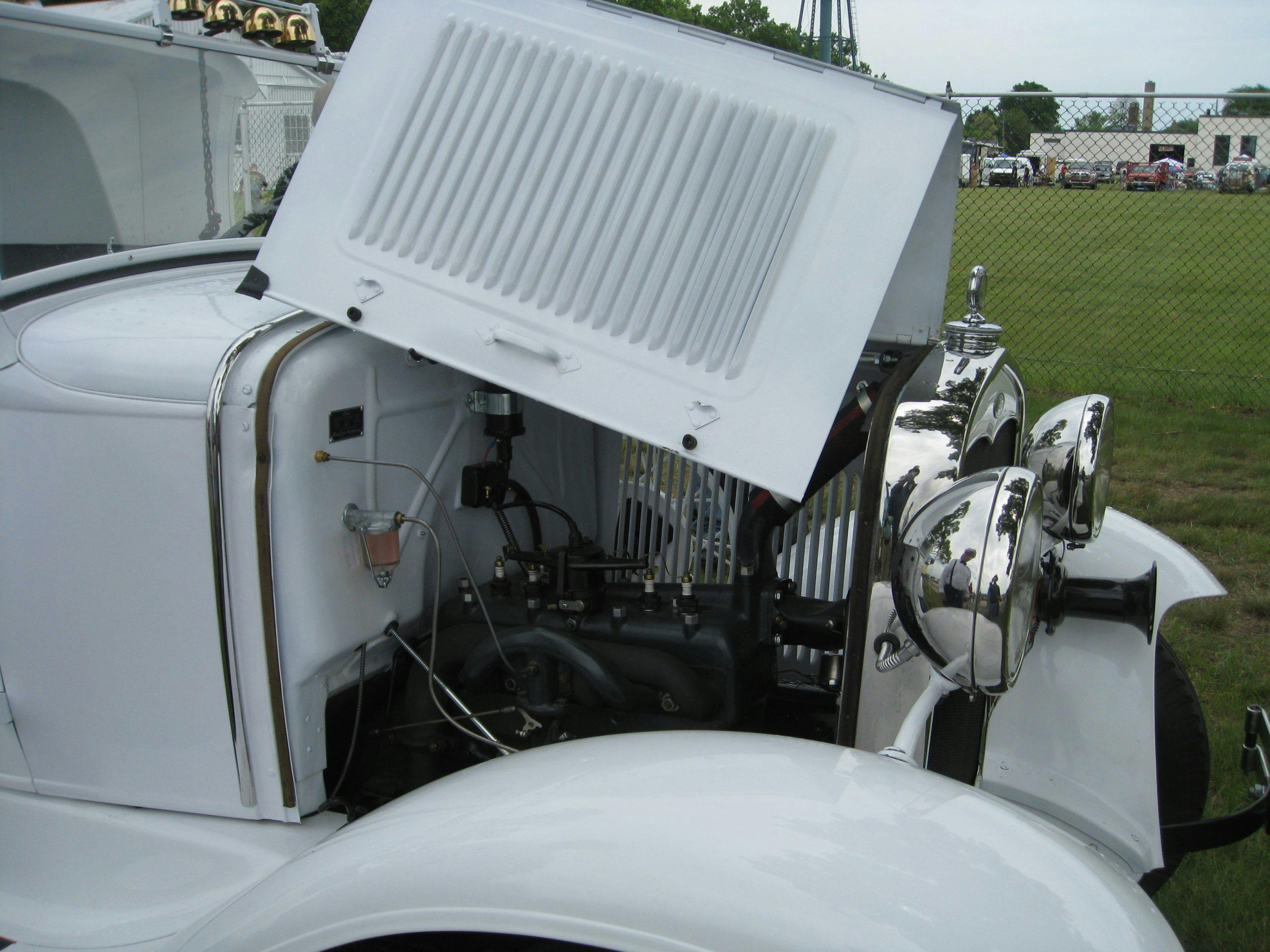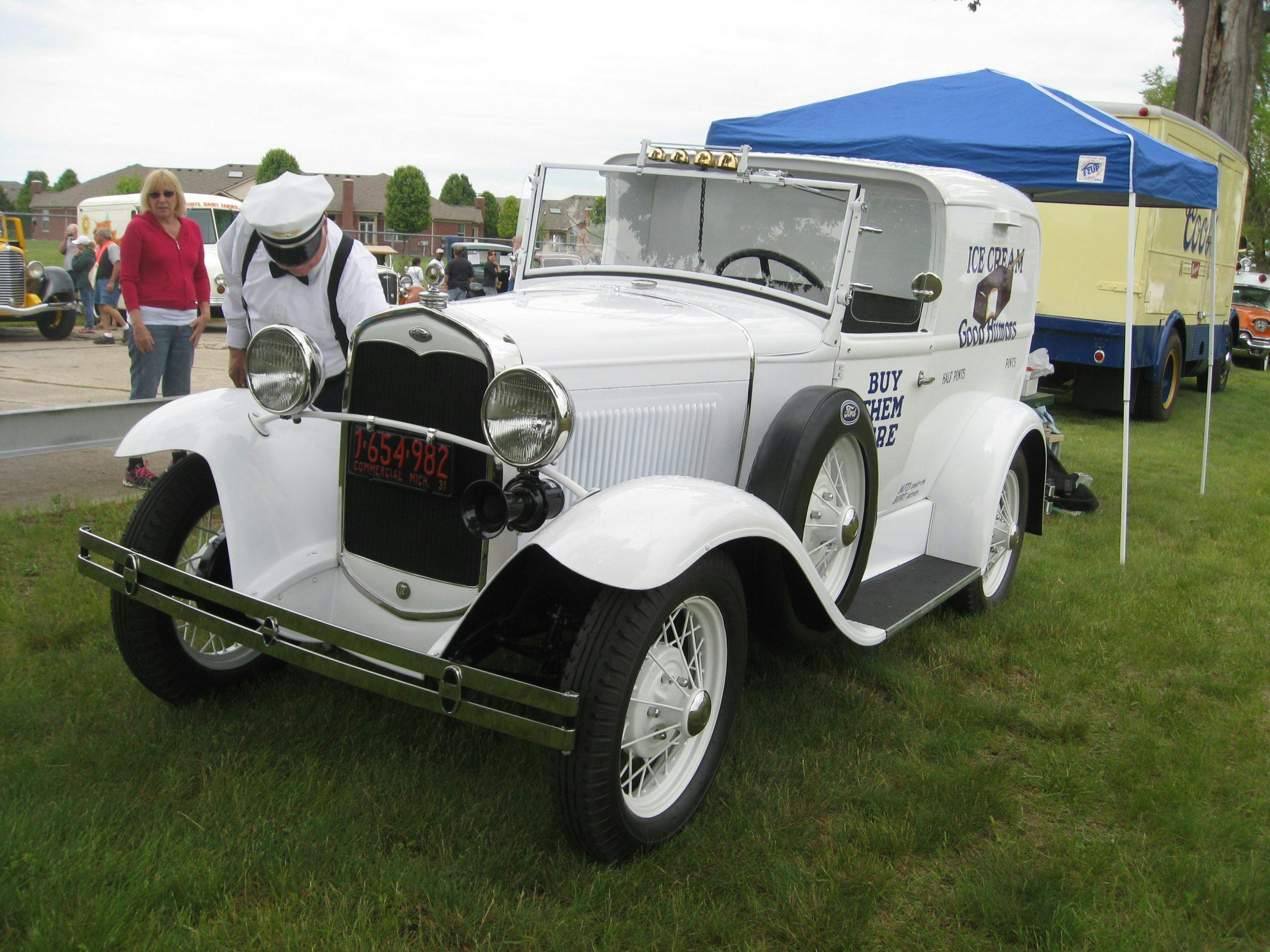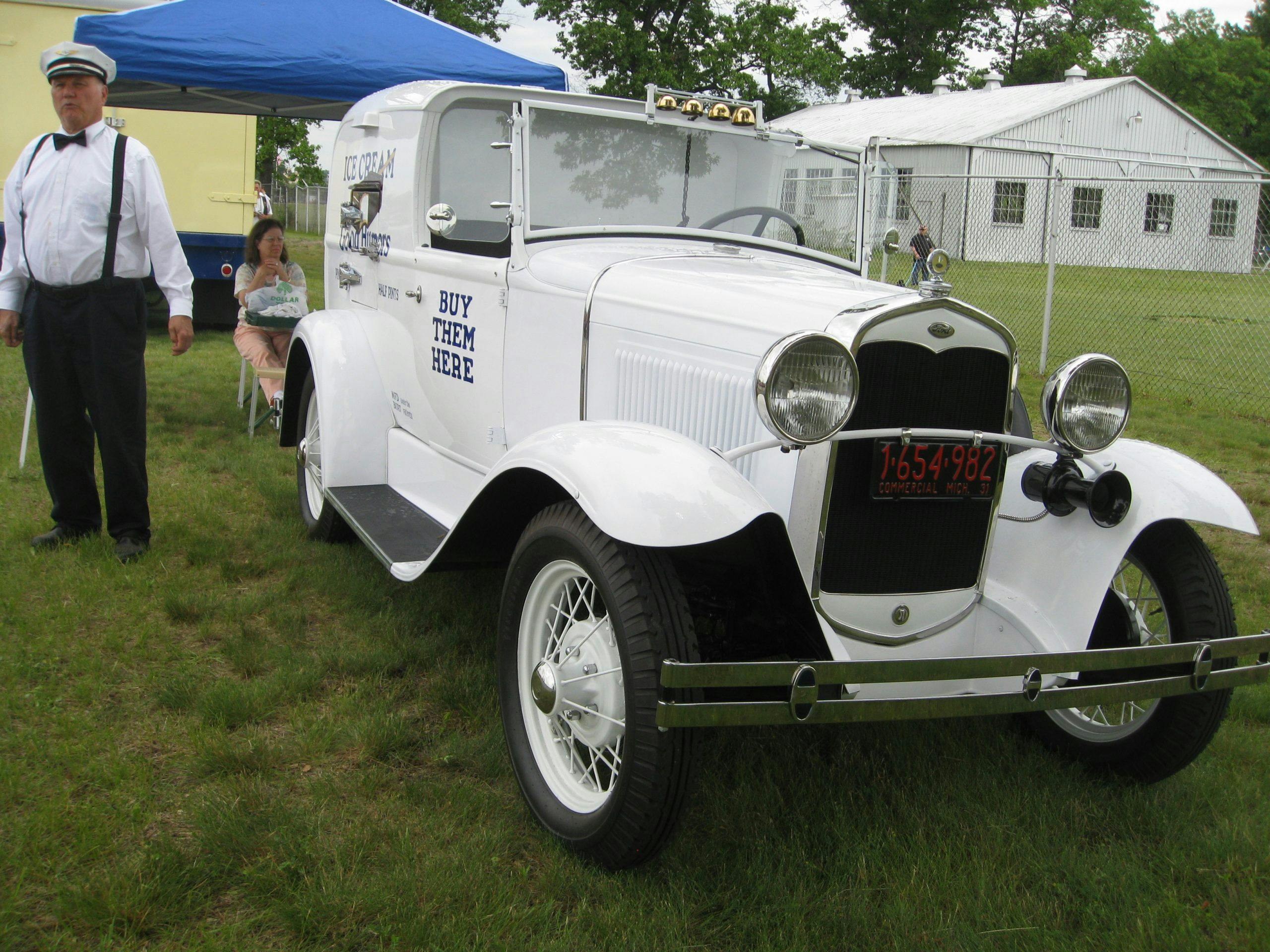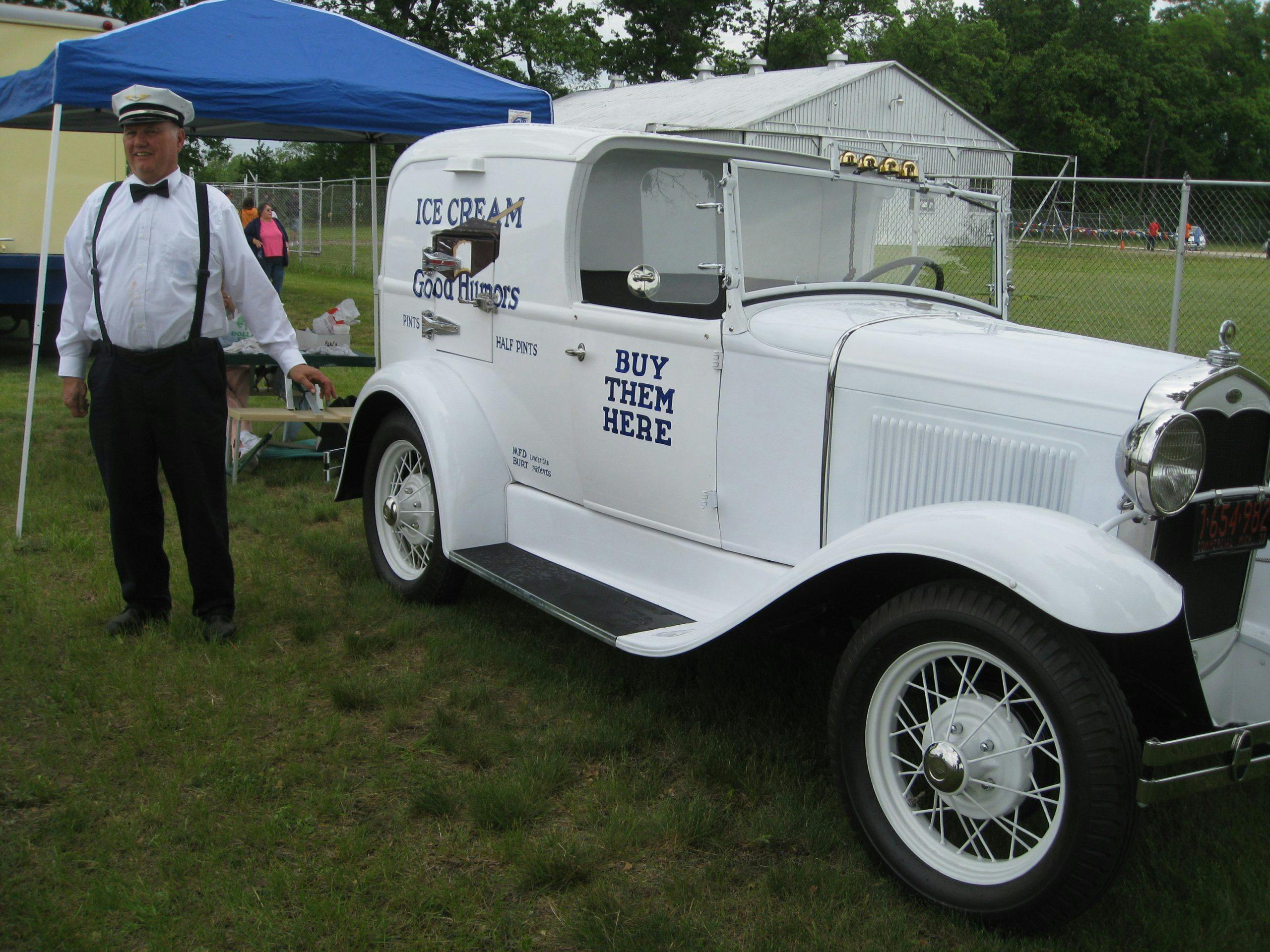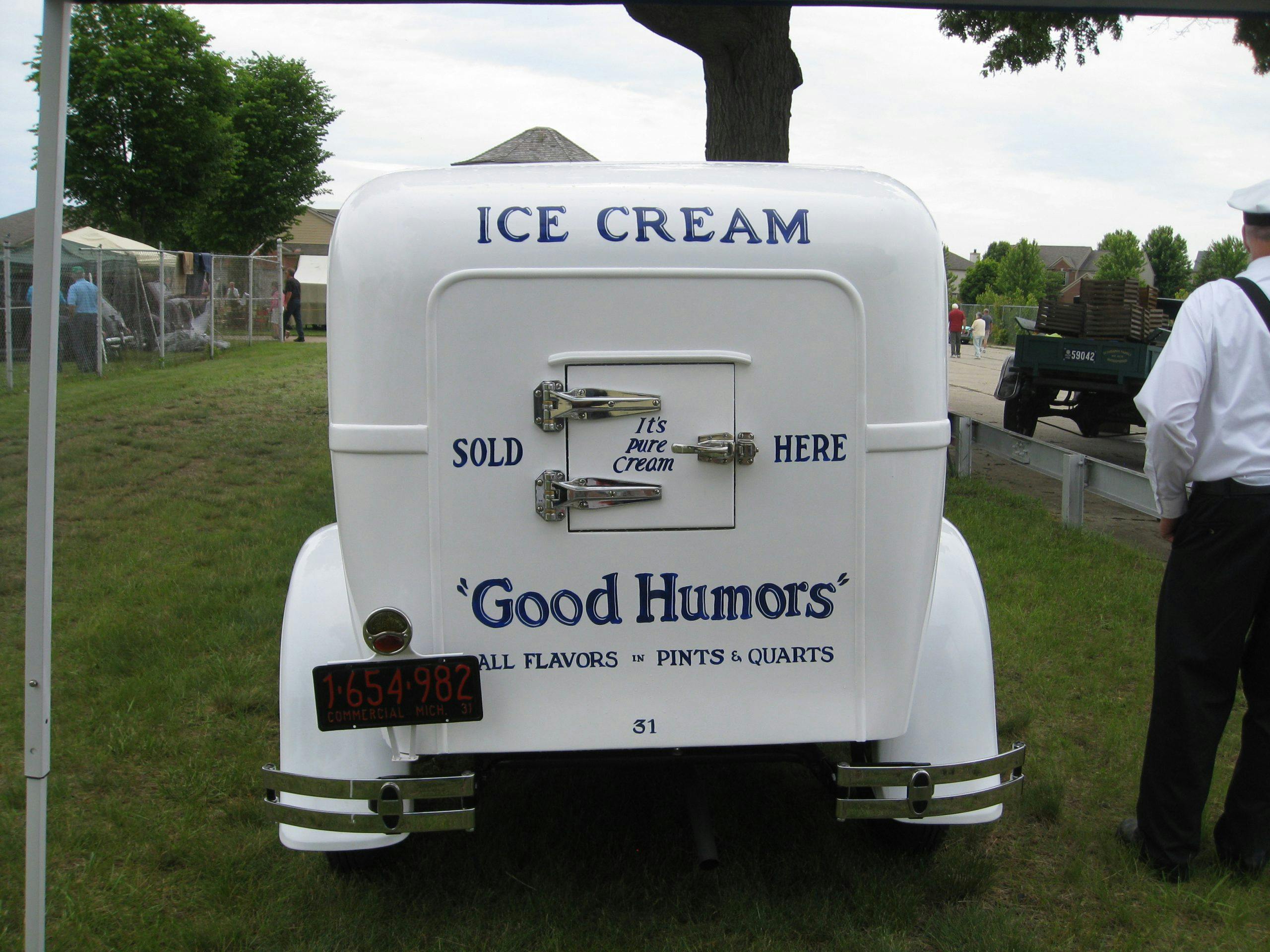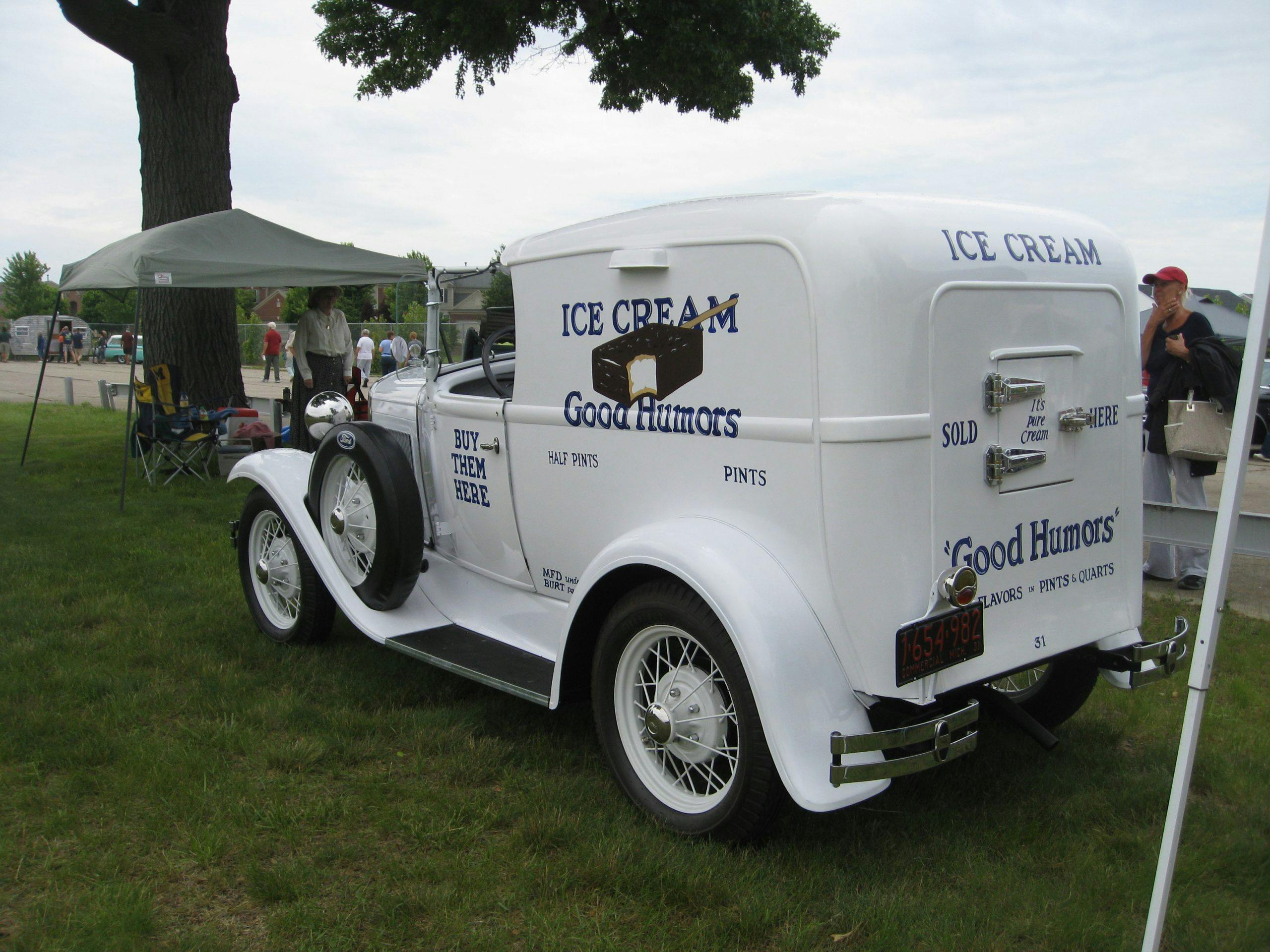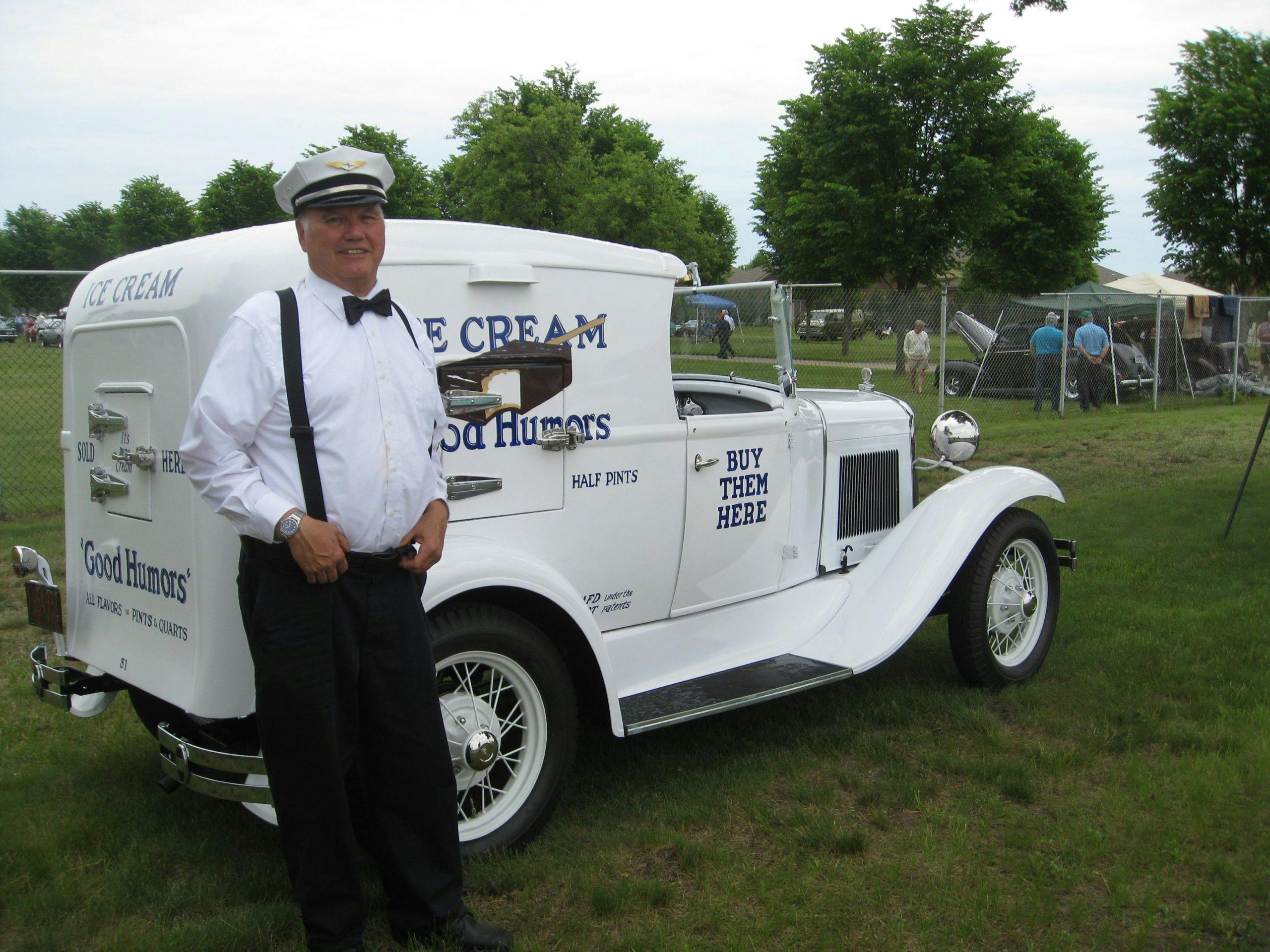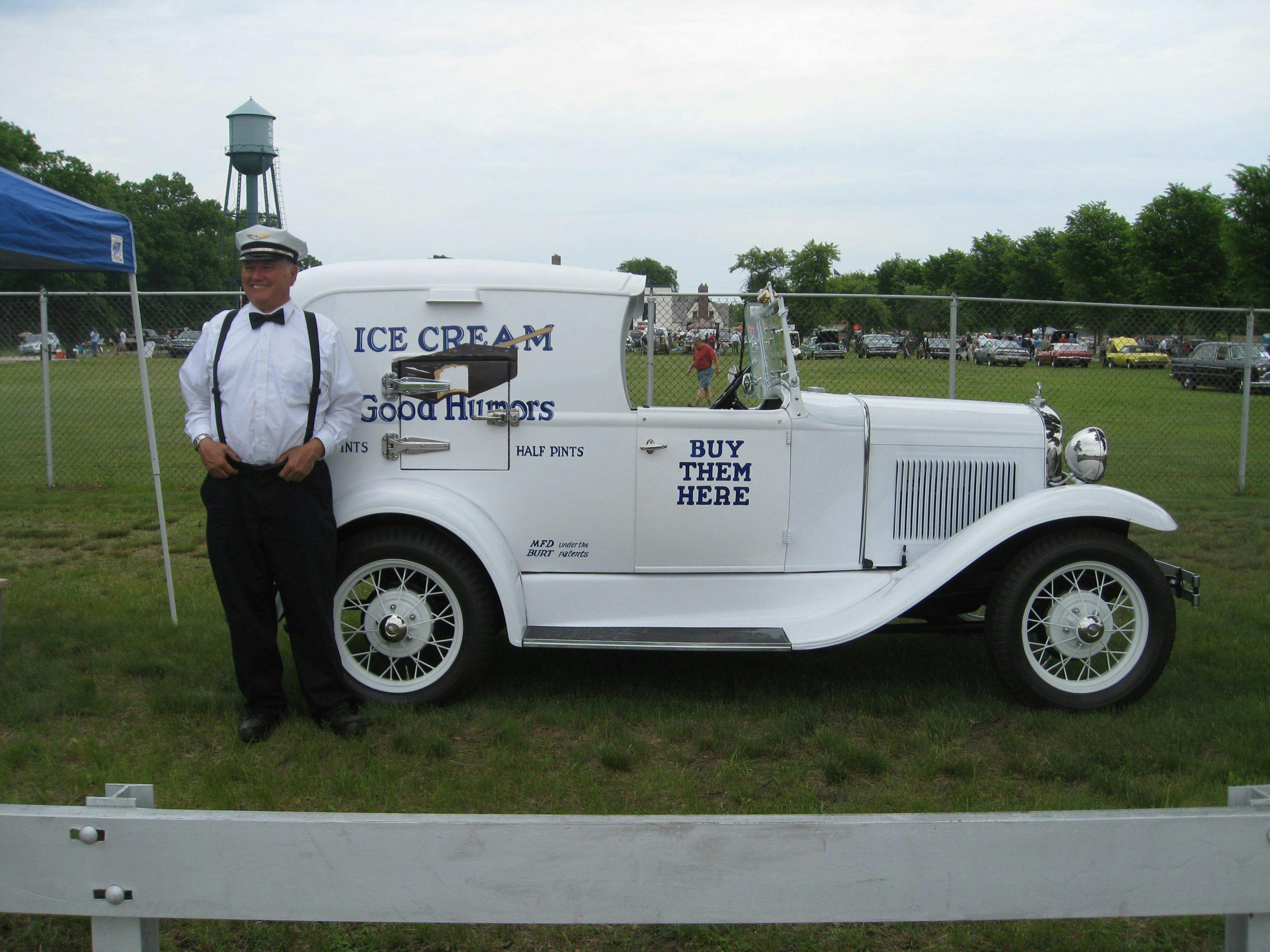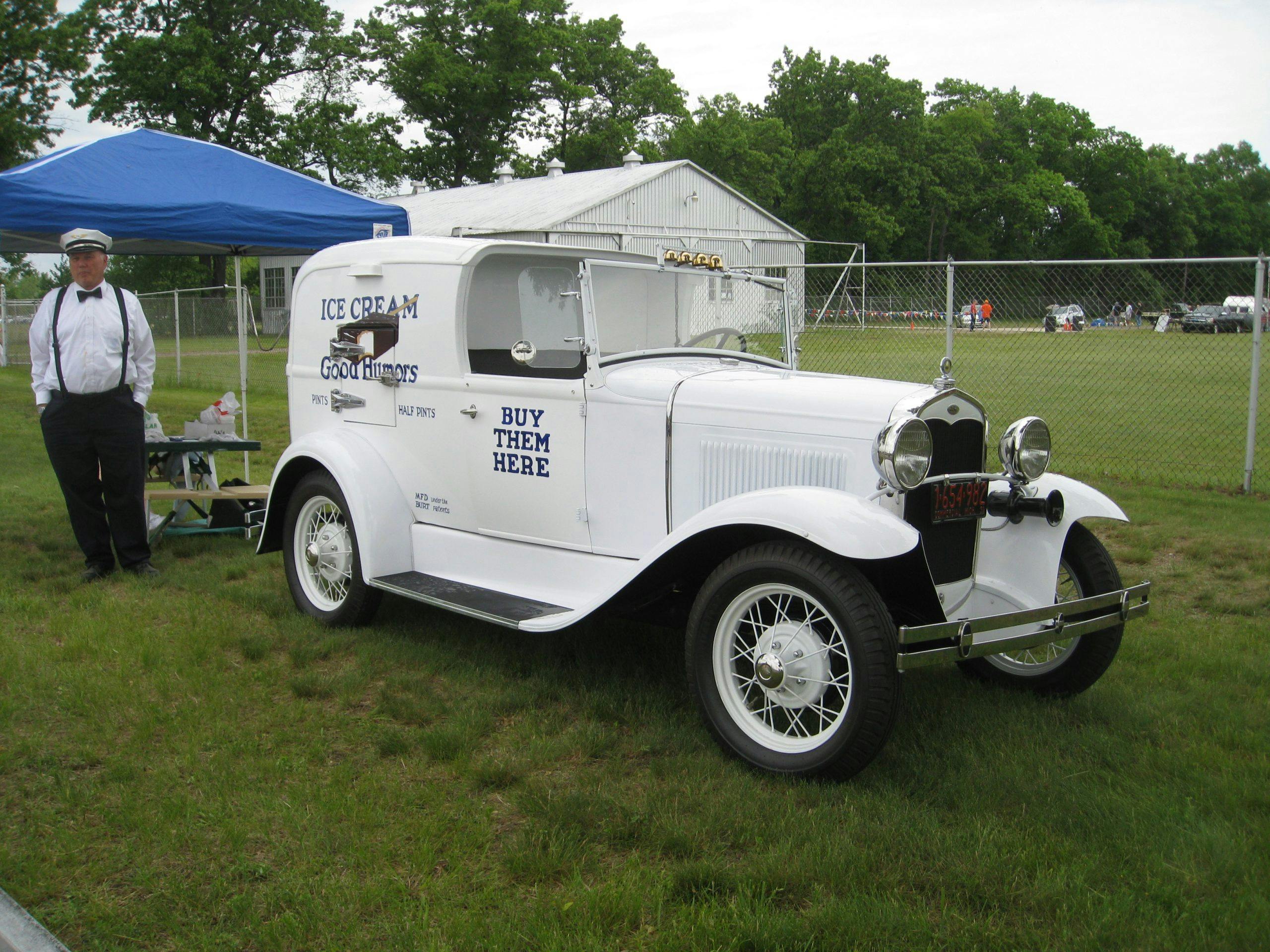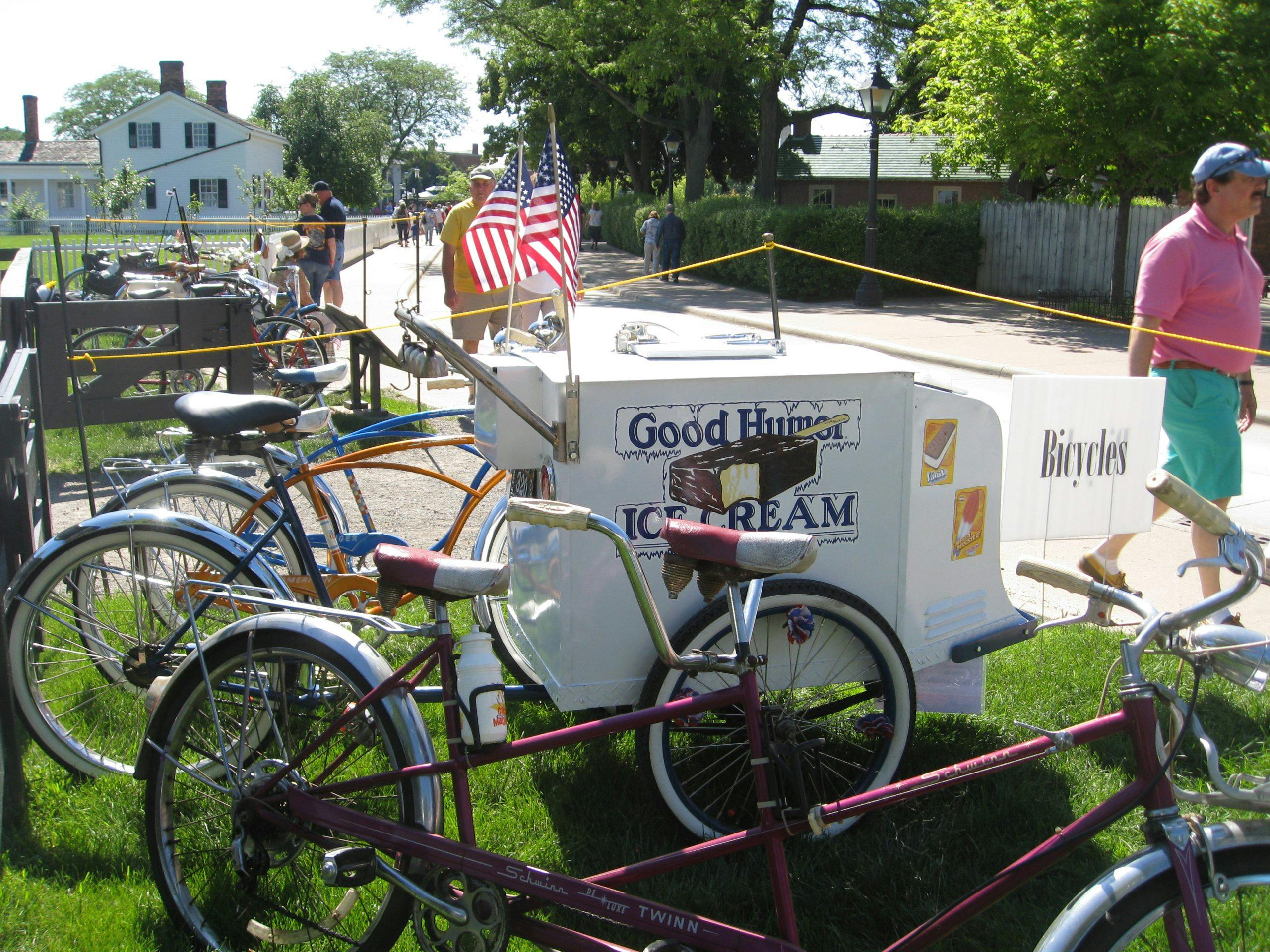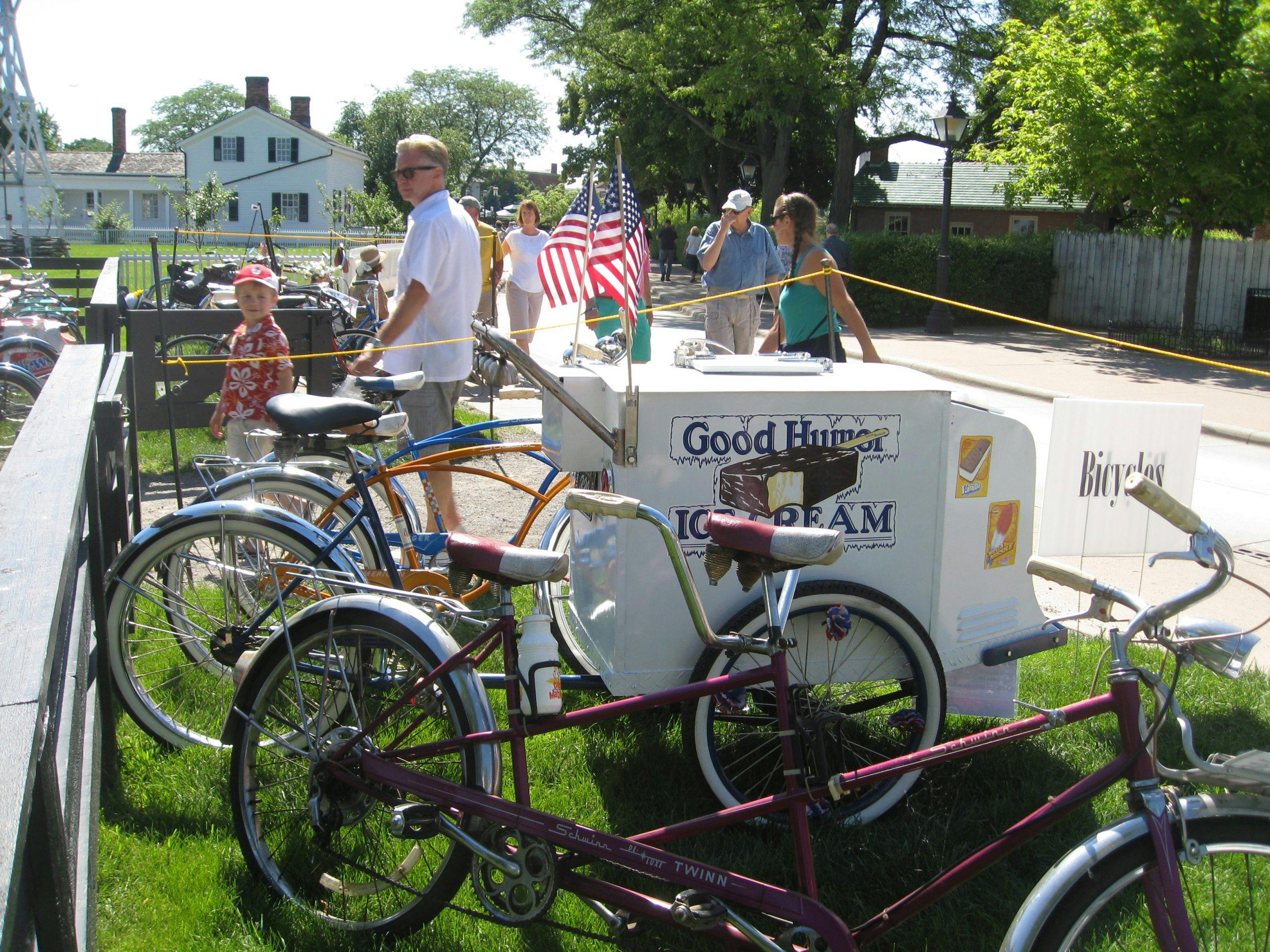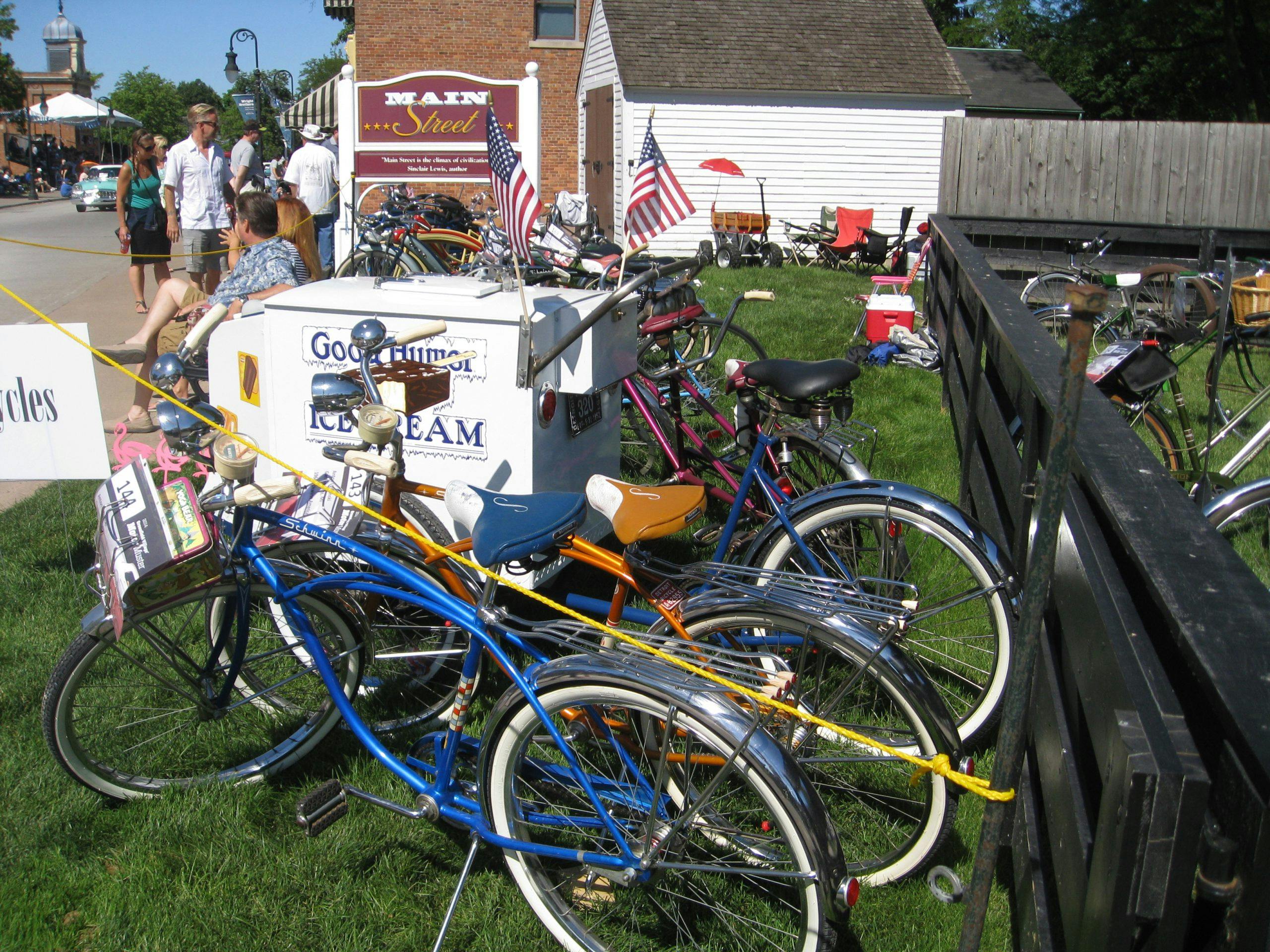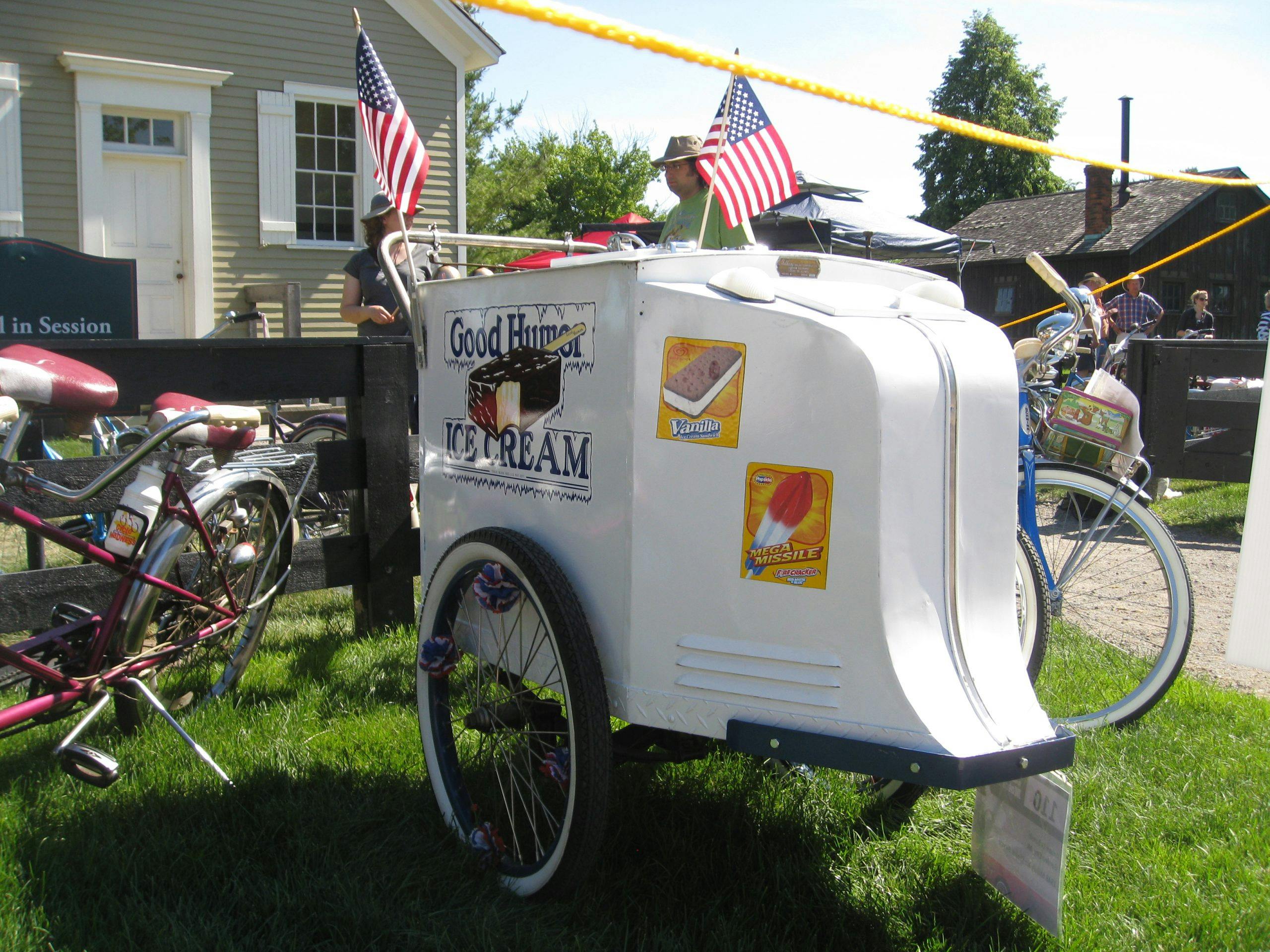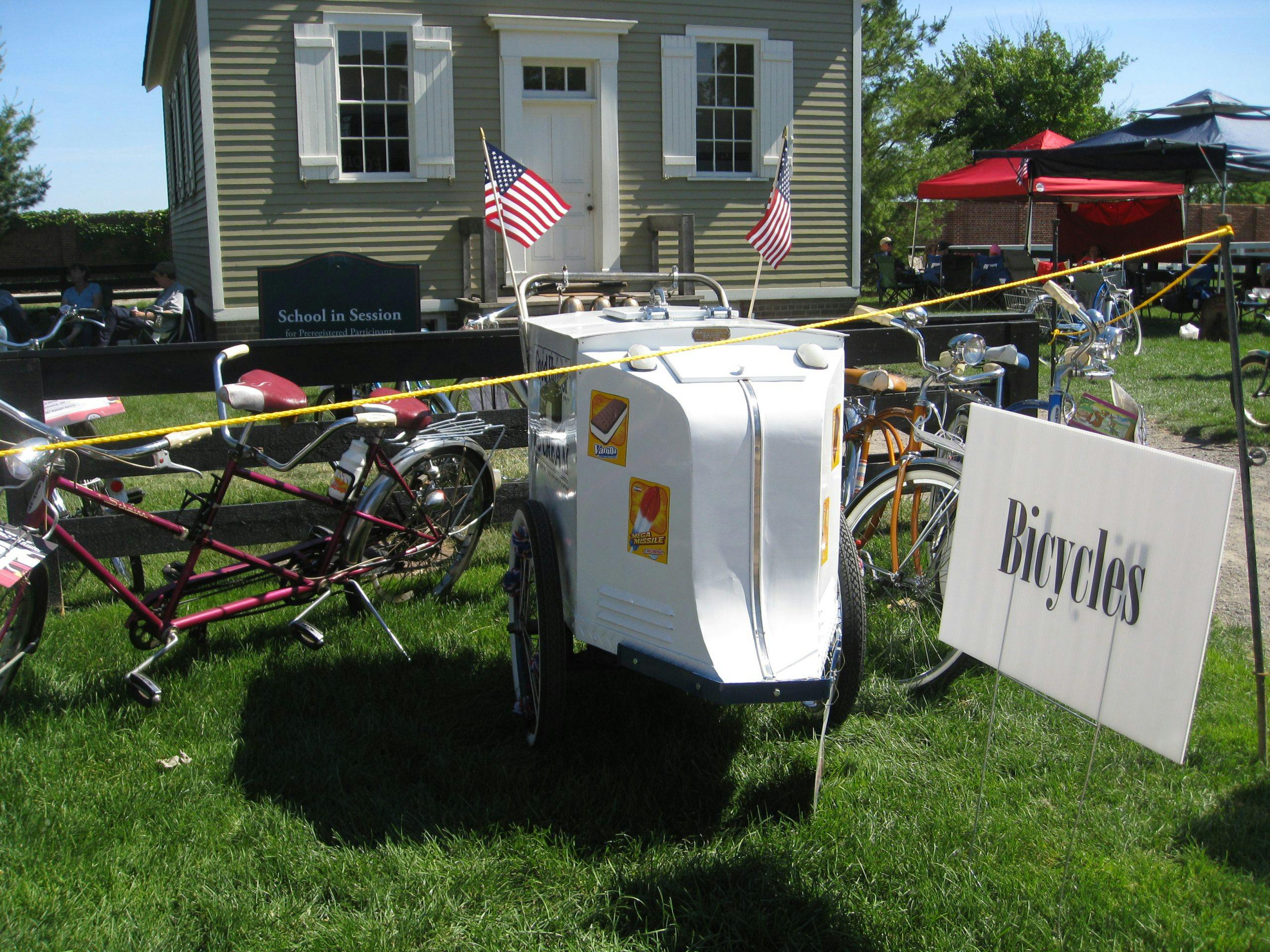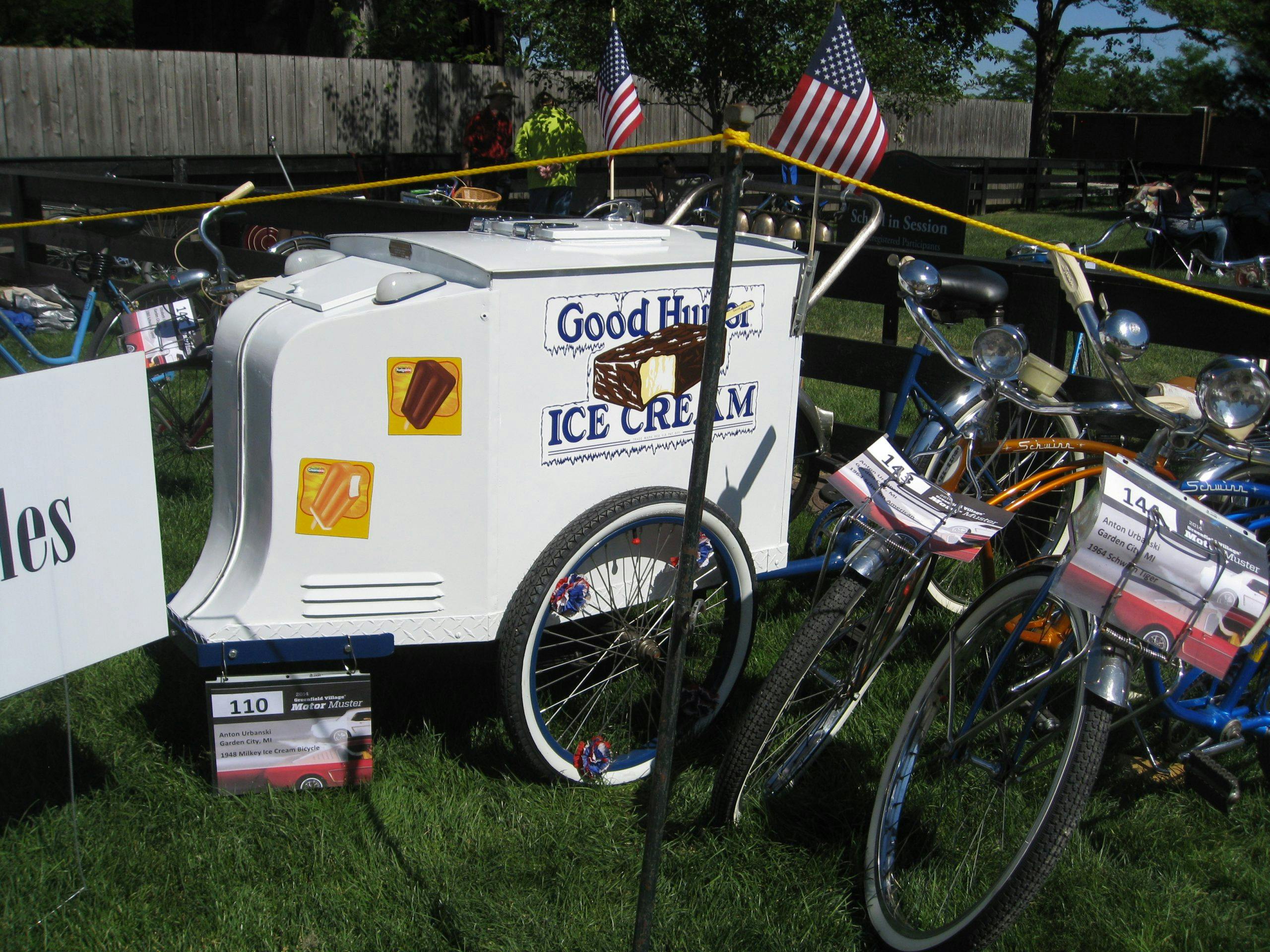Good Humor used Fords to get a handle on the ice cream business
If you’ve ever been annoyed by an ice cream truck in your neighborhood playing the same calliope-influenced tune on an endless loop, you should know that it wasn’t always so. Three or four generations of American children were conditioned with a Pavlovian response to the gentle ringing of brass bells mounted above the windshields of white and blue Good Humor ice cream trucks, whose operators plied their wares in residential neighborhoods across the United States. Today, trucks dispensing food are common in U.S. cities, but for the most part one of the original “food trucks” is but a memory. Good Humor is now almost exclusively a grocery store brand, and the last purpose-built Good Humor truck was built almost 50 years ago.
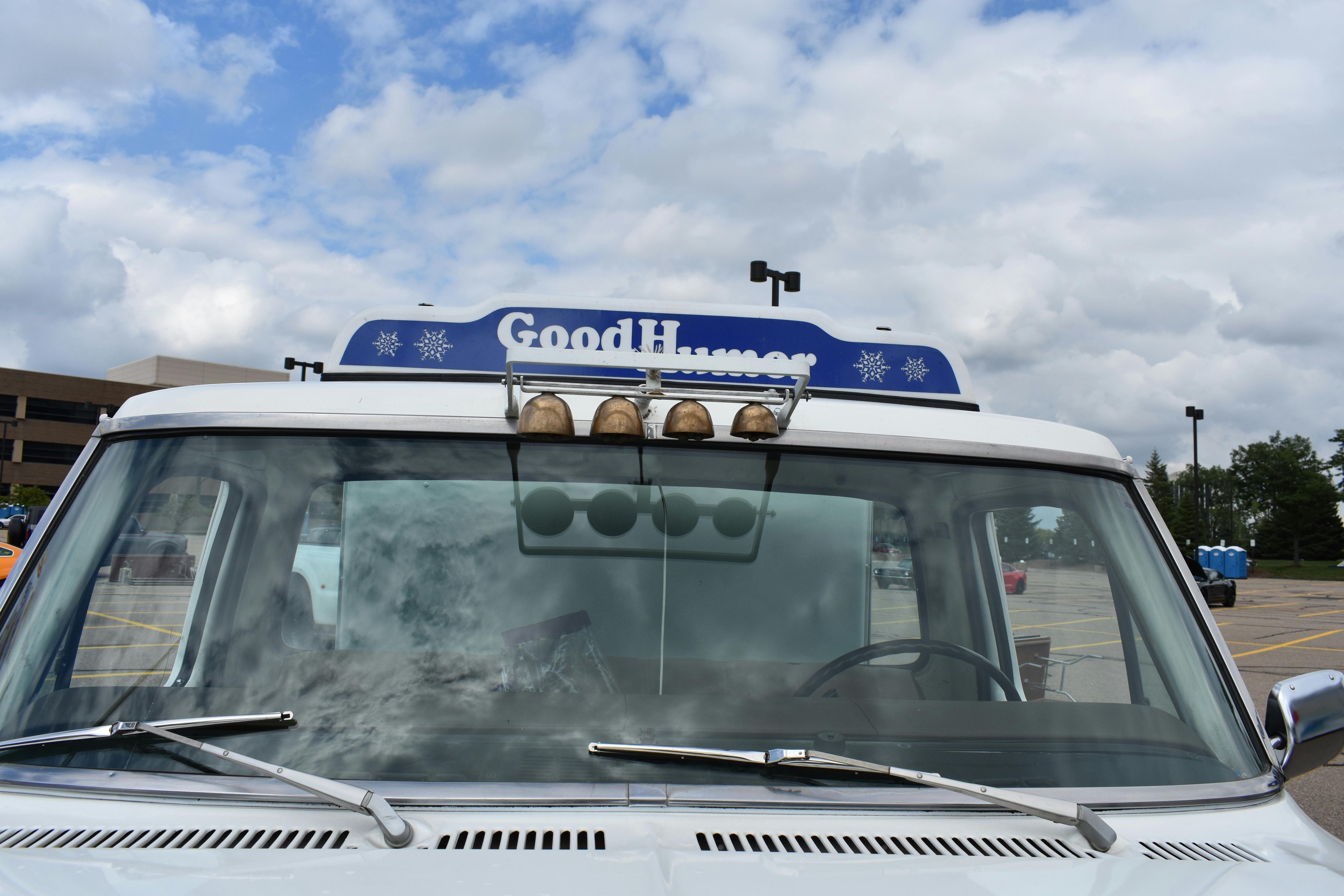
However, you can still buy a Strawberry Shortcake or Toasted Almond ice cream bar from a Good Humor truck—you just have to go to a car event to do it, as collectors of vintage Good Humor trucks have figured out how to subsidize their hobby by selling the sweet, quiescently frozen treats out of their trucks at car shows.
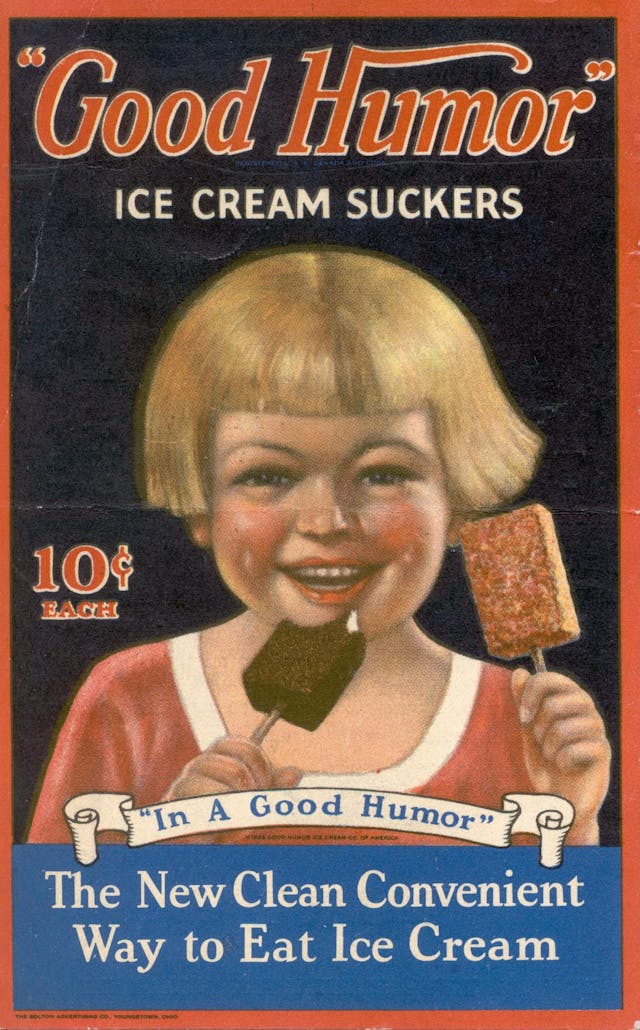
The Good Humor company was started by confectioner Harry Burt over a century ago in Youngstown, Ohio. Burt and his family ran an ice cream parlor in the midwestern city, where they had had some success selling the Jolly Boy Sucker, a hard sugar candy mounted on a wooden stick handle. In 1919, a candy store owner in Iowa perfected the process of coating vanilla ice cream with a thin chocolate shell and started marketing it as the Eskimo Pie. Burt reproduced the process, but his daughter Ruth thought that directly handling the chocolate-covered treat was messy, so her brother Harry Jr. suggested to their father that he should try using one of the Jolly Boy lollipop sticks as a handle.
Harry Sr. experimented with a batch of treats, inserting a wooden stick into each just before putting them in the deep freezer of the ice cream shop’s hardening room. Burt determined that the ice crystals that formed around the stick held it tightly enough to work well as a handle.

An ambitious man, Burt realized that he could sell more ice cream bars than just to people who patronized his ice cream parlor, so he bought a dozen Ford pickup trucks, mounted primitive iceboxes on the back to keep his newly invented ice cream bars frozen, and borrowed the set of bells from Harry Jr.’s bobsled so drivers could ring them as they drove, attracting children of all ages.
Burt named his ice cream bar “Good Humor” and, as you could imagine, after a century there’s more than one account of how he chose that brand name. Both accounts rely on the fact that the word humor, which today is a synonym for comedy, had other meanings 100 years ago. One’s “humor” was considered a person’s general outlook on life, and at the time people thought that a person’s outlook on life could be affected by the food that they ate. Another contemporary meaning used humors as a synonym for flavors and, in fact, some of the early Good Humor trucks bore the plural name “Good Humors,” as in good flavors. In addition to the novel ice cream bars, the trucks also sold Burt’s ice cream flavors in pint and half-pint containers.
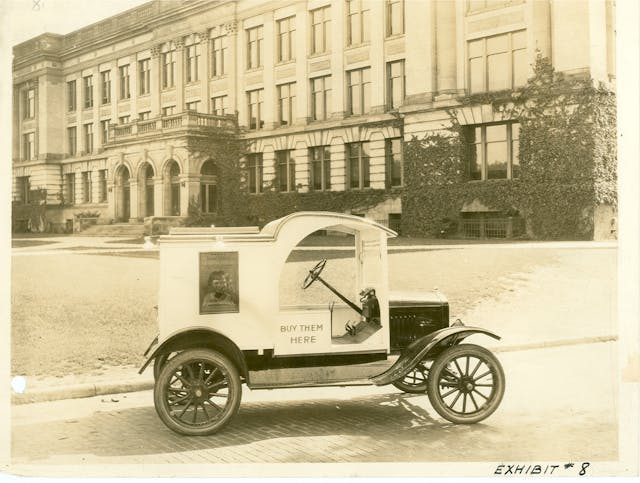
In an era that produced Upton Sinclair’s The Jungle, about the less-than-sanitary practices of the meat packing industry, food safety was an issue to consumers and politicians, leading to the establishment of the U.S. Food and Drug Administration in 1930. To give the impression of cleanliness, Burt had his trucks painted white, and the drivers wore white uniforms. Those uniforms had a deliberate law enforcement look, with leather belts and shoes, a bow-tie, a military style cap, and a policeman’s sash, to reassure customers that the food, and drivers, were safe. Another important feature of the Good Humor uniform was a belt-mounted coin changer manufactured by the McGill company of Illinois.
Besides using trucks, Good Humor vendors also used push carts and pedal carts, always in white with dark blue lettering, and always with bobsled bells. When the Good Humor bars were illustrated, as on the side of the trucks’ freezers, or in advertisements, they usually had a bite taken out of them, a clever bit of subliminal advertising.

Harry Burt apparently was a Ford guy—and he had the custom, open-roofed cab bodies and freezers done by the Hackney Brothers coachbuilding company—but later regional Good Humor franchisees used other vendors, so there still are a number of vintage, Chevrolet-based Good Humor trucks. Still, the relationship between Good Humor and Ford was strong, with about 90 percent of the Good Humor fleet based on Ford trucks. So strong, in fact, that Ford used Good Humor trucks in its advertisements touting reliability. For many people, the Good Humor truck is an open-roofed version of the 1950s and ’60s F series Ford pickups. Hackney made those classic ice cream trucks with no doors. The driver’s side could not open. Instead, the operator entered and exited the cab via a pass-through opening on the curb side, where his customers would be standing.

When the U.S. Patent Office rejected Burt’s application to protect his ice cream bar on a stick idea, saying that it was too similar to the Eskimo Pie, Burt personally lobbied patent examiners in Washington, resulting in patents being granted in 1923 on both the equipment and processes that he developed.
Unfortunately, Harry couldn’t enjoy his success for very long, dying just a few years later in 1926. His widow sold the company to a group of Cleveland investors, who rechristened the firm as the Good Humor Corporation and started selling regional franchises. In an era of bootleggers and organized crime, that decision led to some violence. The owner of the Detroit Good Humor franchise decided to expand to Chicago in 1929. Local mobsters demanded $5000 in “protection” money. When the franchisee refused to pay, the gangsters put a number of Good Humor trucks to the torch. Rather than scare the entrepreneur away, the publicity surrounding the arson helped establish the Good Humor brand name in the Windy City. At a time when only movie theaters were air conditioned, the fact that people could buy a cold, sweet treat for just 10¢ allowed the Good Humor brand to grow nationally despite the ongoing Great Depression.
As American suburbs expanded after World War II, Good Humor expanded along with them to satiate baby boomers’ sweet tooths, eventually growing to a couple thousand trucks nationwide, which accounted for 90 percent of the company’s sales in the mid-1950s. Half of the company’s customers were not yet teenagers, and the company anticipated even greater growth as those teens matured and had their own children.
By then the Good Humor truck had become a fixture of the American landscape. Columbia Pictures even made a 1950 theatrical release titled The Good Humor Man, starring comedian Jack Carson. The opening shot of the murder mystery comedy is of a Good Humor truck’s ringing bells, and Carson’s Ford F-1 based, open-top truck is in almost every scene, even, implausibly, a car chase.
Although its sales continued to rise into the 1960s, Good Humor faced competition and labor troubles. The Mister Softee company, which still operates what it claims is the largest fleet of ice cream trucks, put soft-serve ice cream machines on its own distinctive looking step-vans, expanding into Good Humor territories. The drivers of Good Humor trucks were organized by the Teamsters union, which repeatedly struck during the 1950s and ’60s. Both factors seriously impacted Good Humor’s profitability, and starting in 1968, the company went into the red. The truck fleet started shrinking;, and by the early 1970s, Good Humor was only operating about 1200 trucks.
By then the company was owned by the Unilever corporation, a diversified company that could absorb the losses of one relatively small division, but the oil crisis of 1973 and the resulting spike in gasoline prices made truck sales unprofitable. Hackney, which had switched to step-vans for Good Humor in 1969, made the last two traditional Good Humor trucks in 1973, based on Ford F-250 heavy duty pickups, as a special order for a Florida-based Good Humor distributor.
Sales continued to sag through the 1970s, and by the end of that decade Good Humor had sold off what remained of its truck fleet for just $1000–$3000 a vehicle. Many of them were purchased by Good Humor vendors, who continued to operate as independents. These days, you’d be lucky to find a nice Good Humor truck for 10 times that higher figure.
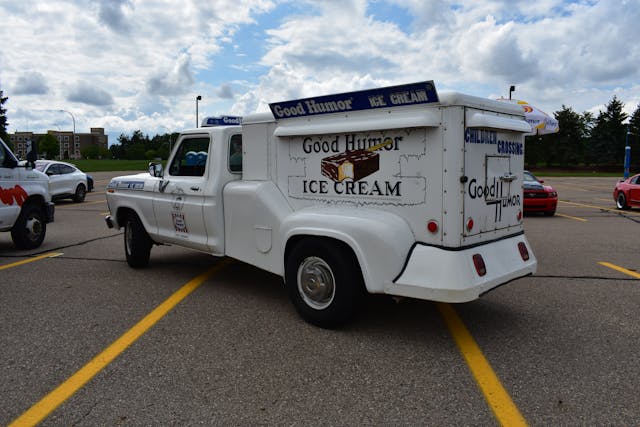
One of those last traditional Good Humor trucks is owned by Mike and Sue Berardi. They call it “Cream Puff,” one of five Good Humor trucks that they currently own. It’s a bit of a fixture at Detroit area car events; I first ran into the Berardis at Greenfield Village’s Motor Muster car show. As a side business, they rent it out for parties and corporate and charity events, as well as displaying it at car shows around Detroit, selling ice cream bars from the truck. You can see their schedule at their Ol’ Tyme Good Humor Ice Cream website. While the Berardis didn’t disclose any sales figures to me, some owners of Good Humor trucks report grossing up to $1000 a day at similar events.
Keeping their small fleet of Ford-based Good Humor trucks running is likely made easier by Mike’s day job as director of service engineering for a small family-owned business … known as Ford Motor Company.
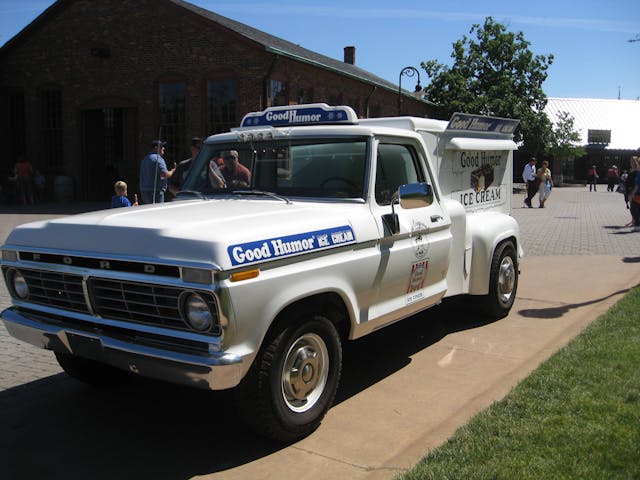

Not far from where the Berardis were selling Good Humors out of their Good Humor truck at the Motor Muster was the show’s display of vintage bicycles, set up adjacent to the Wright Brothers’ bicycle shop. Sitting out front was a Good Humor bike—actually a trike—with a cooler made by Milkey, circa 1948, resplendent in bright Good Humor white and replete with the Burts’ bobsled bells. It’s obviously been restored, and jusdging from the modern ice cream stickers on it, my guess is that its owners are also in the ice cream business, at least part time.
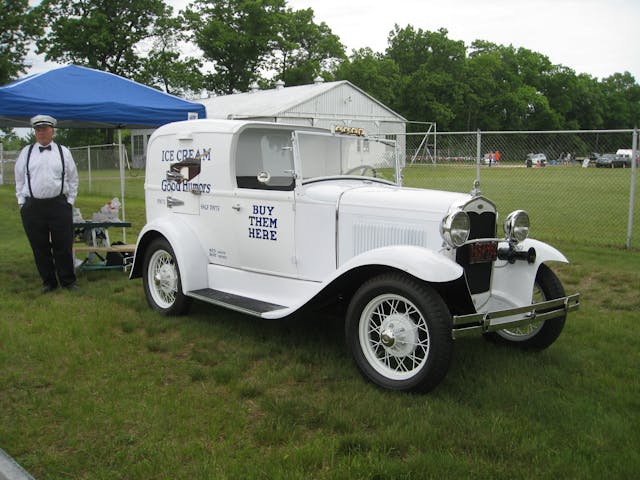
If postwar vehicles are not your thing, perhaps Joe Hornacek’s beautifully restored open roof “half cab” 1931 Ford Model A Good Humor truck might be more to your taste. I met Joe at one of the Packard Proving Grounds “Cars R Stars” shows, where he was giving out free samples of Good Humor bars to children of all ages. A true barn find, when Hornacek located the Model A Roadster Pickup based truck it was in pieces in a barn near Port Huron, Michigan. He originally thought that it was too deteriorated to restore, but once all the parts were layed out he realized that he had the majority of the most important feature of the truck, the freezer box. So he bought the Good Humor truck and began a restoration. While some of that restoration was eased by the base vehicle being a Model A, for which all sorts of new-old stock and reproduction parts are available, the job was complicated by the fact that the freezer box had been repaired many times and was far from original. It was also not made by Hackney, but rather an unidentified coachbuilder. Once Hornacek recreated the freezer’s ash wood frame, he discovered that over the years some of the body panels had gotten way out of square and could no longer be used. While those panels were reproduced, the majority of the truck is original, at least in terms of components.
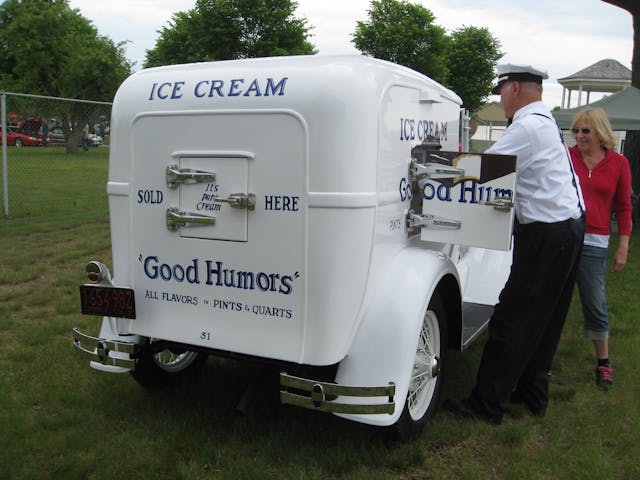
Hornacek’s truck was painted (Hackney-made freezers were porcelain enameled for durability) based on a photograph of a 1930 Ford Good Humor truck that is in the Smithsonian national museum’s collection. That’s why it uses the period brand “Good Humors,” along with the disclaimer, “Mfd. under the Burt patents,” likely local franchisees effort to assure customers of authenticity and quality. Along with that photograph, the Smithsonian also has a complete Good Humor truck in its collection, though it’s Chevrolet based.
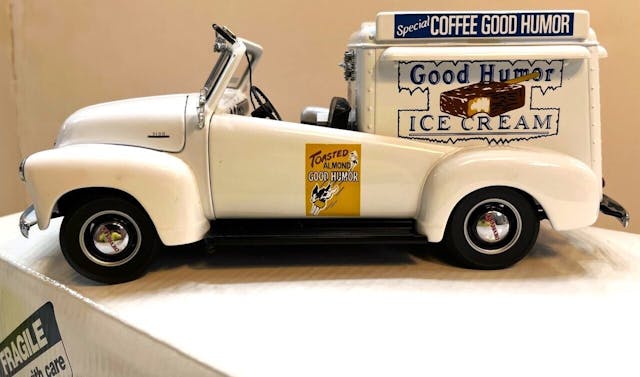
Like Hornacek and the Berardis, you too can own a Good Humor truck, but while they aren’t inexpensive, they aren’t prohibitively expensive compared to some other collectible vintage vehicles. In 2012, a 1965 Ford-based Good Humor truck with a Pebble Beach award-winning restoration from the John Staluppi collection was auctioned at $66,000. That same year, a 1929 Ford Model AA Good Humor truck sold for $38,500. In 2018, an even-more impressive 1966 Ford based Good Humor truck from the Staluppi collection sold for $117,700.
Mike Berardi told me that they were thinking of downsizing and selling a couple of their early-1960s vintage open-roof trucks. When I inquired about the price, he said trucks like those typically go for about $30K. If that’s too steep for you, the Danbury Mint has made collectible scale models of both 1953 Chevrolet and 1930 Ford Good Humor trucks.
Of course, if you bought a full-sized Good Humor truck, you could justify the purchase by stocking the freezer with Good Humor bars and start selling ice cream at car shows.

Check out the Hagerty Media homepage so you don’t miss a single story, or better yet, bookmark it.

